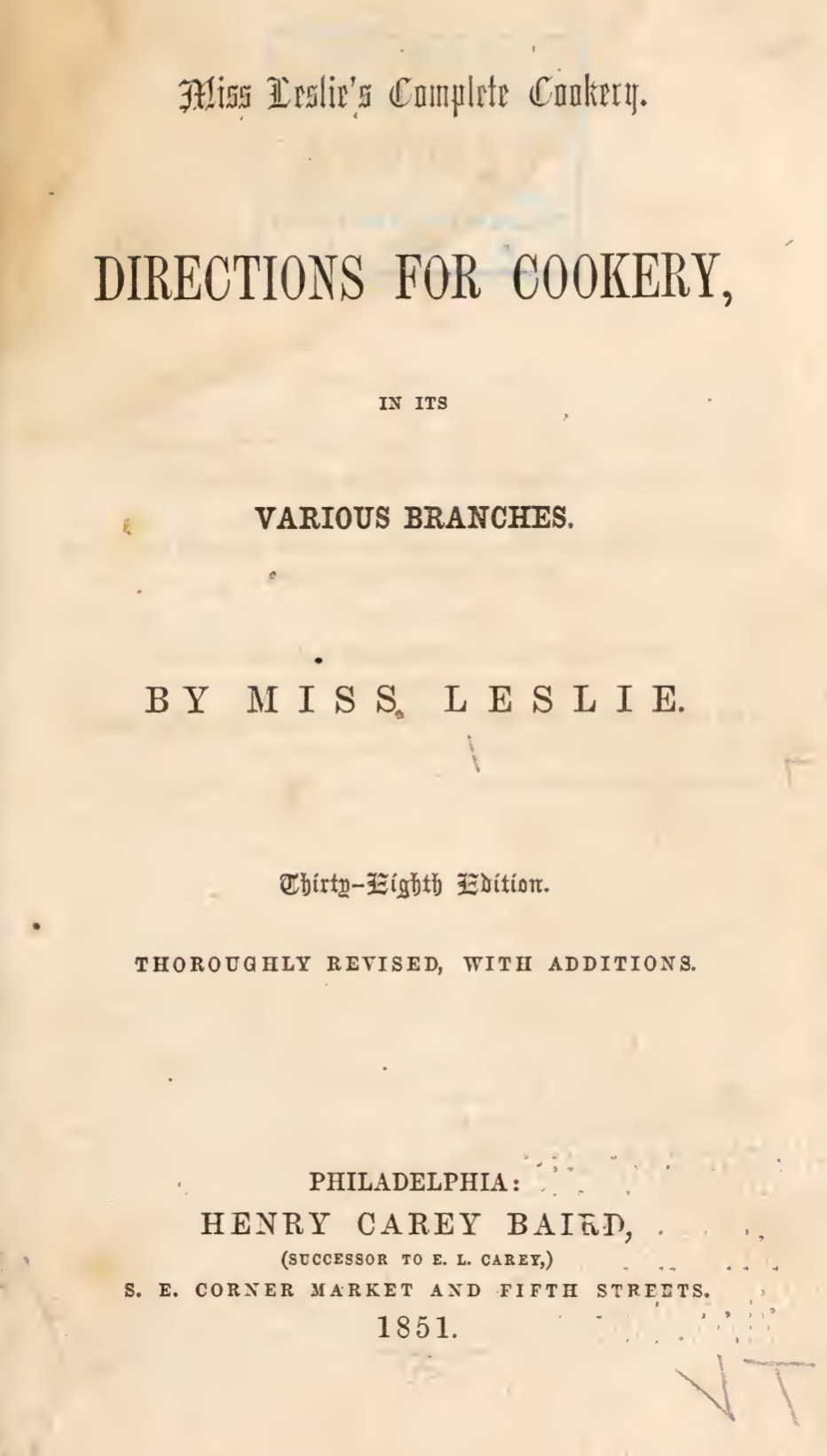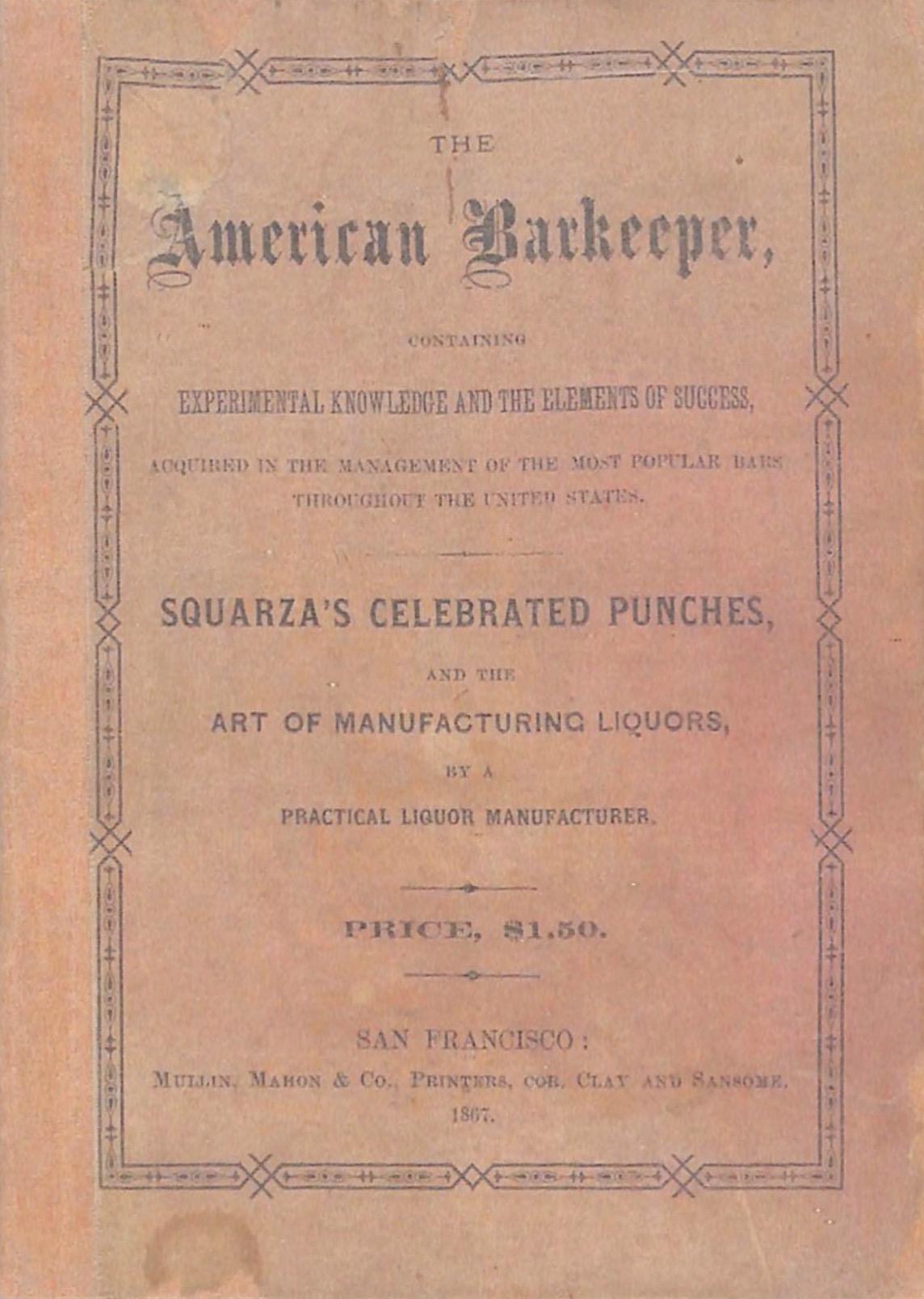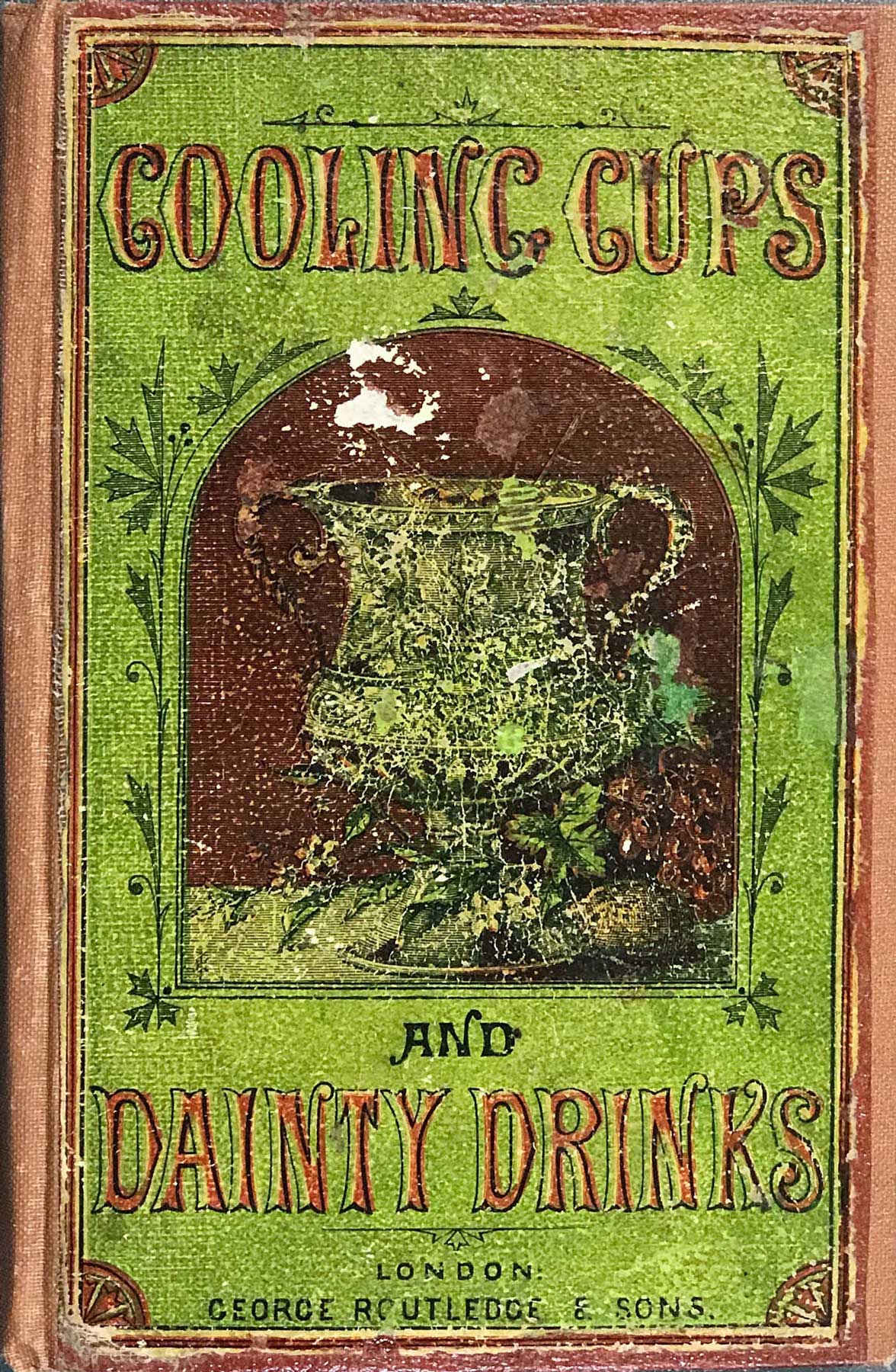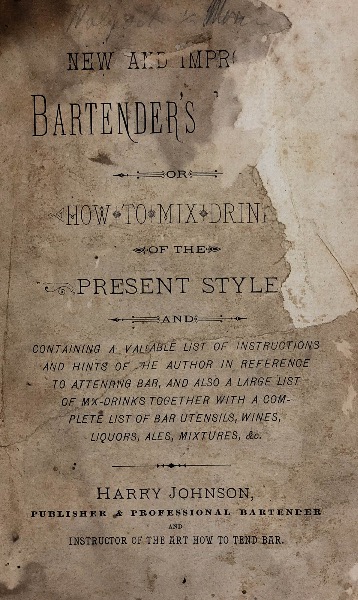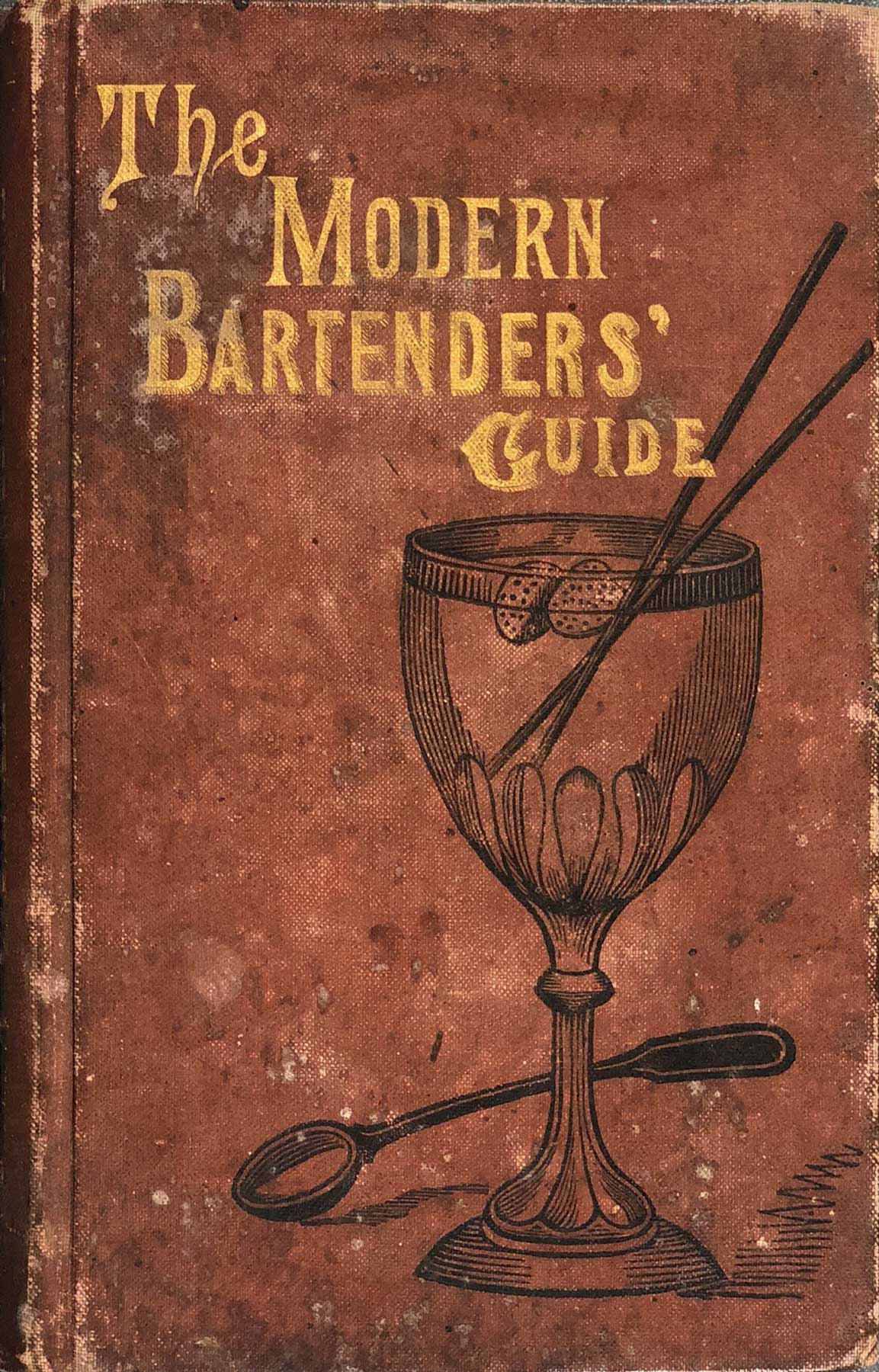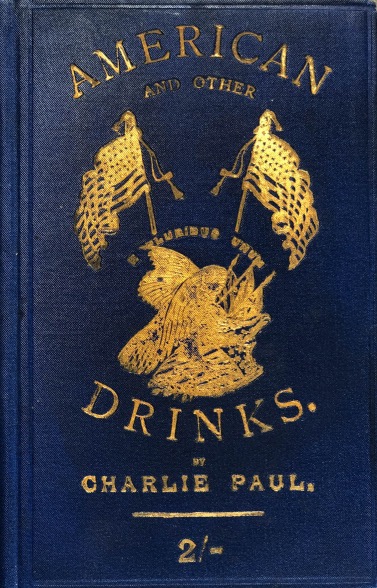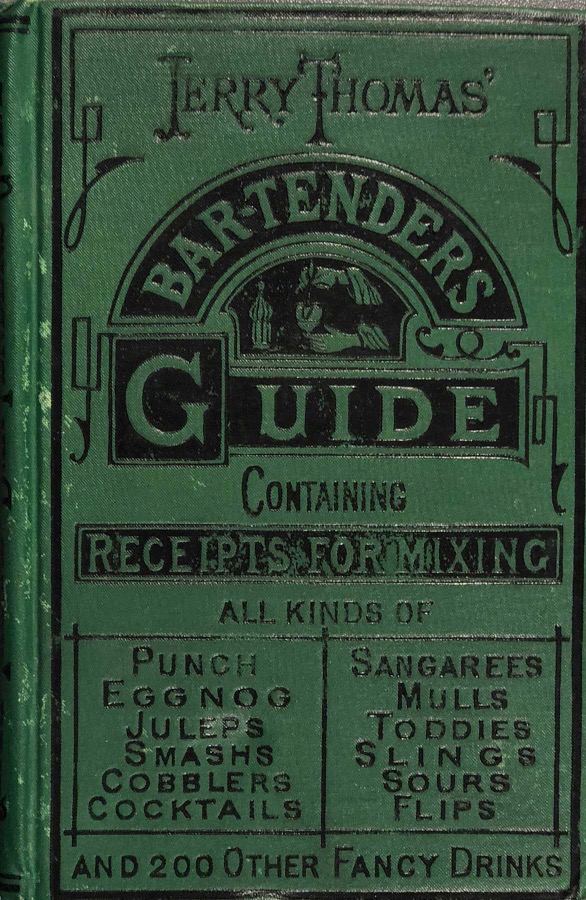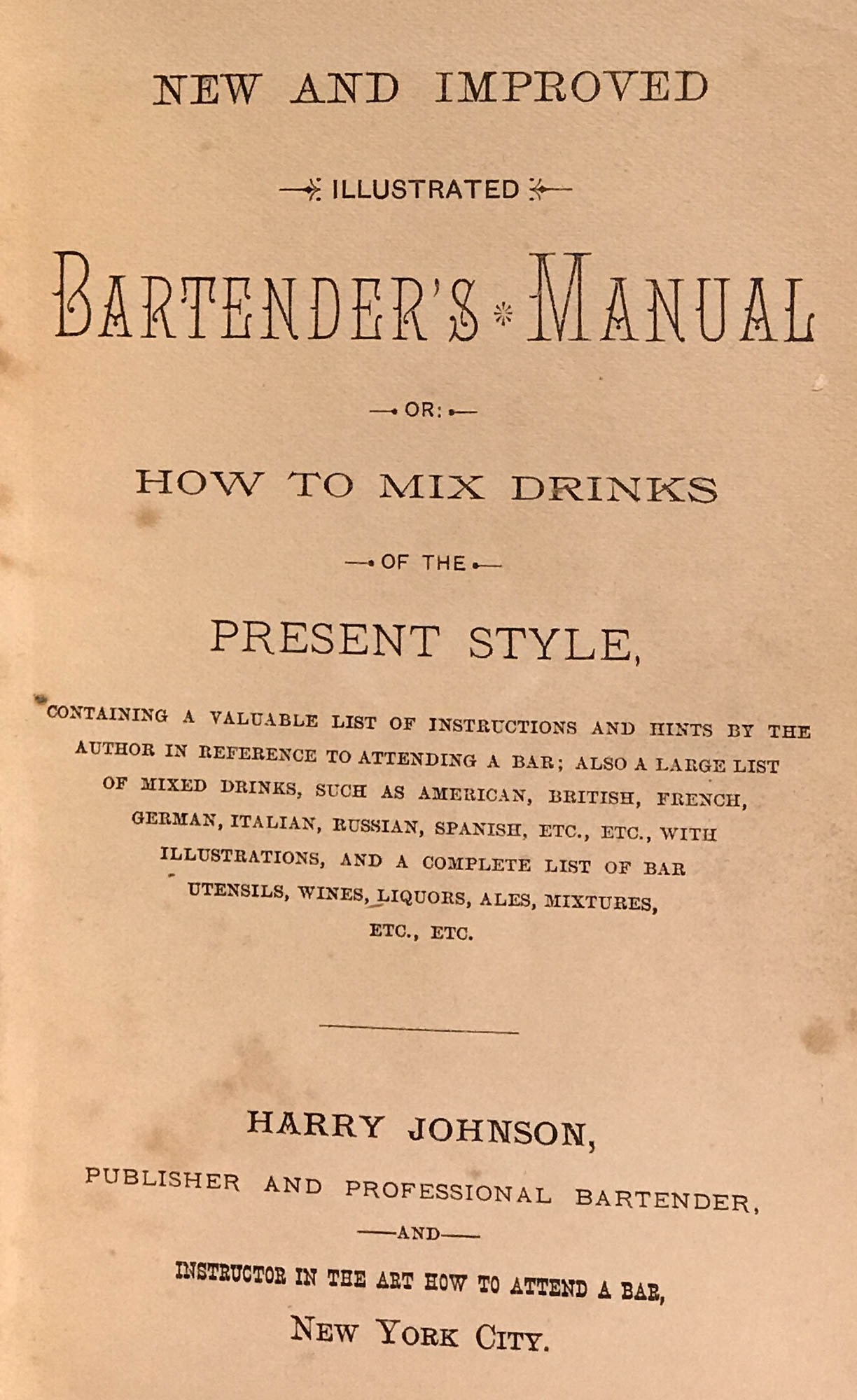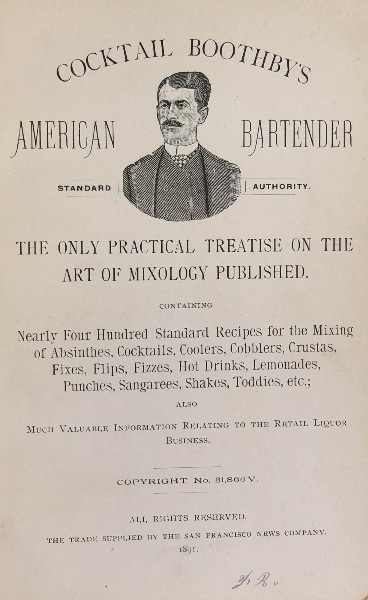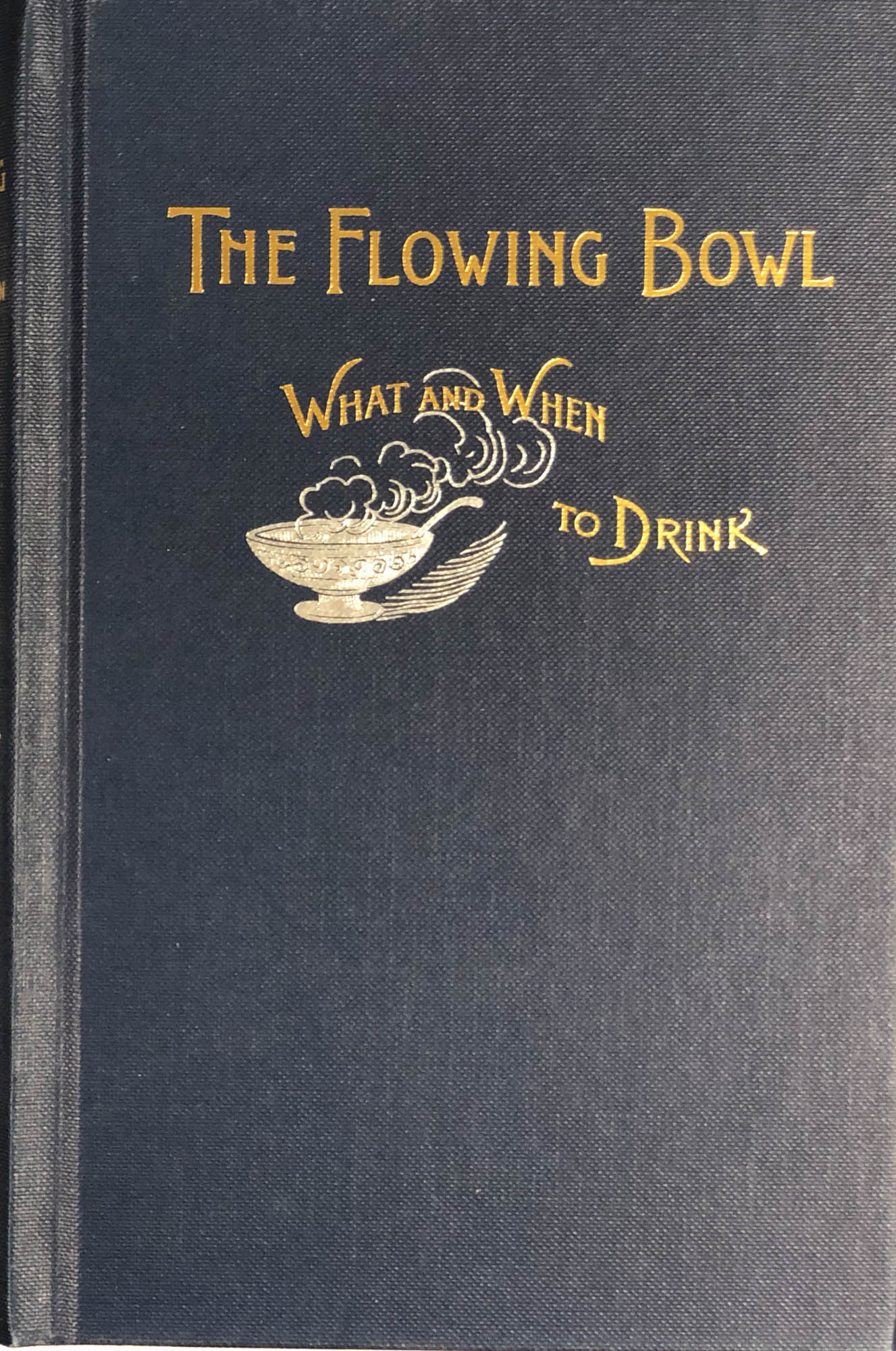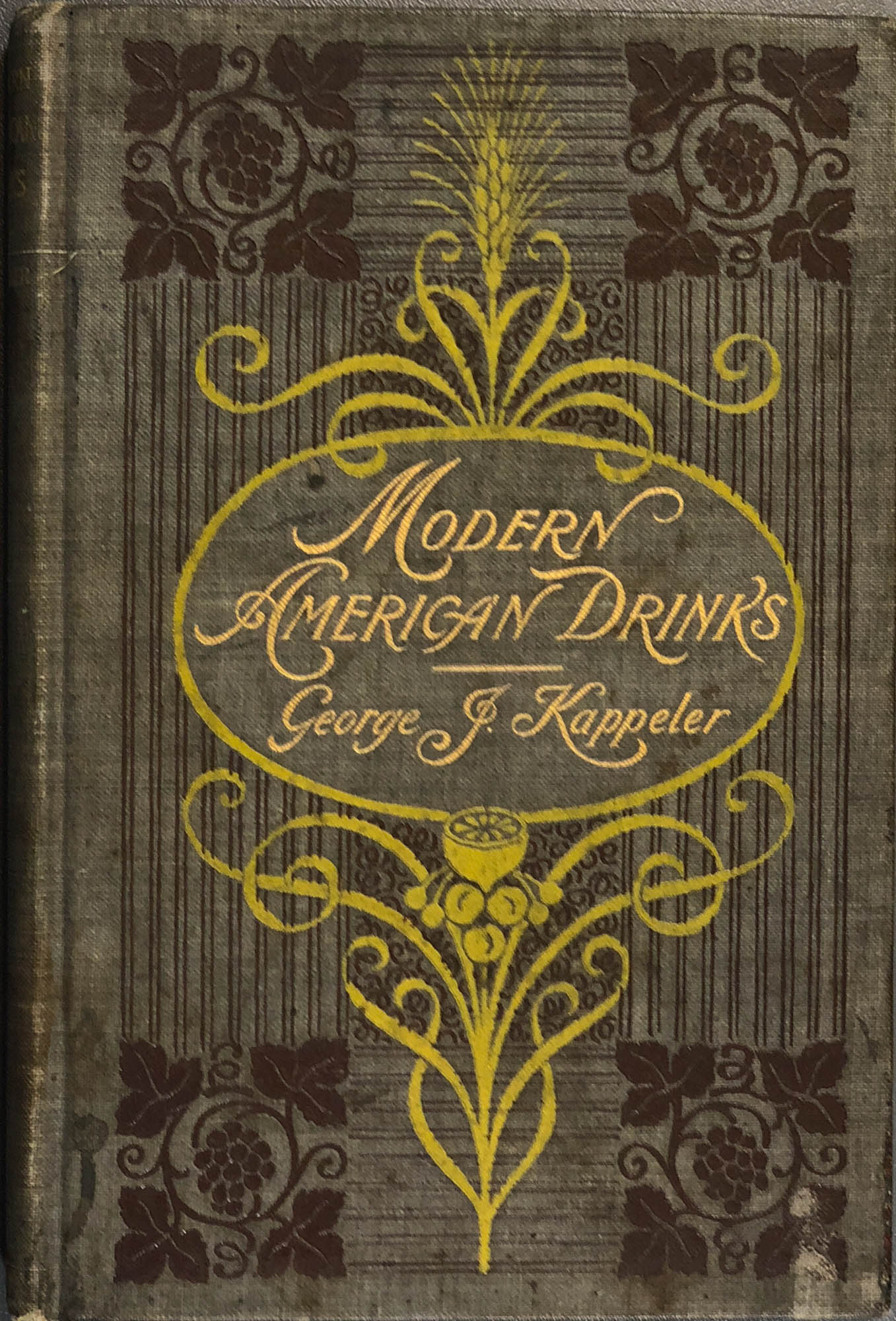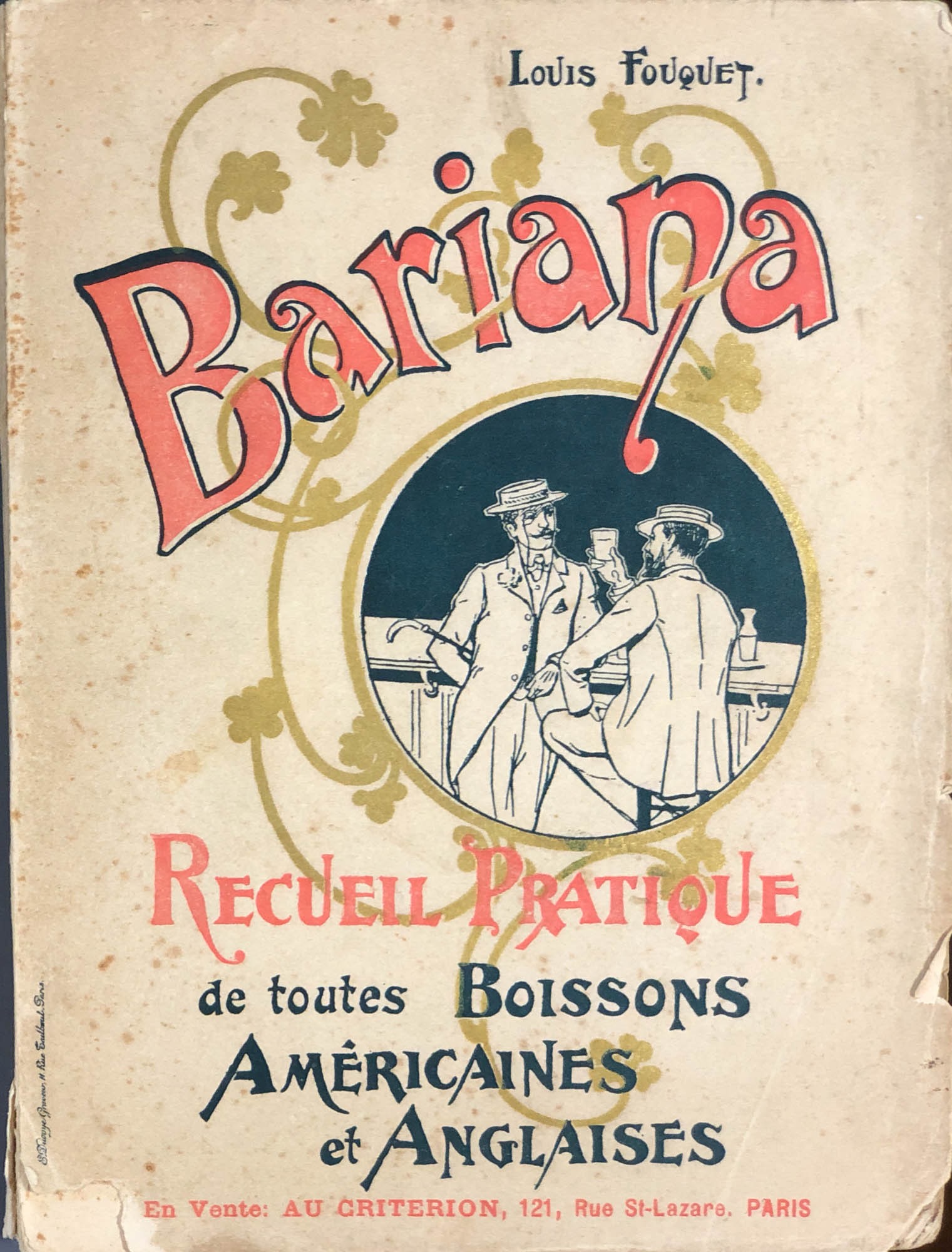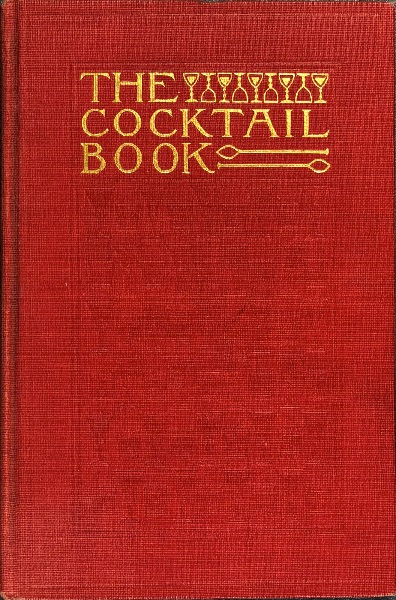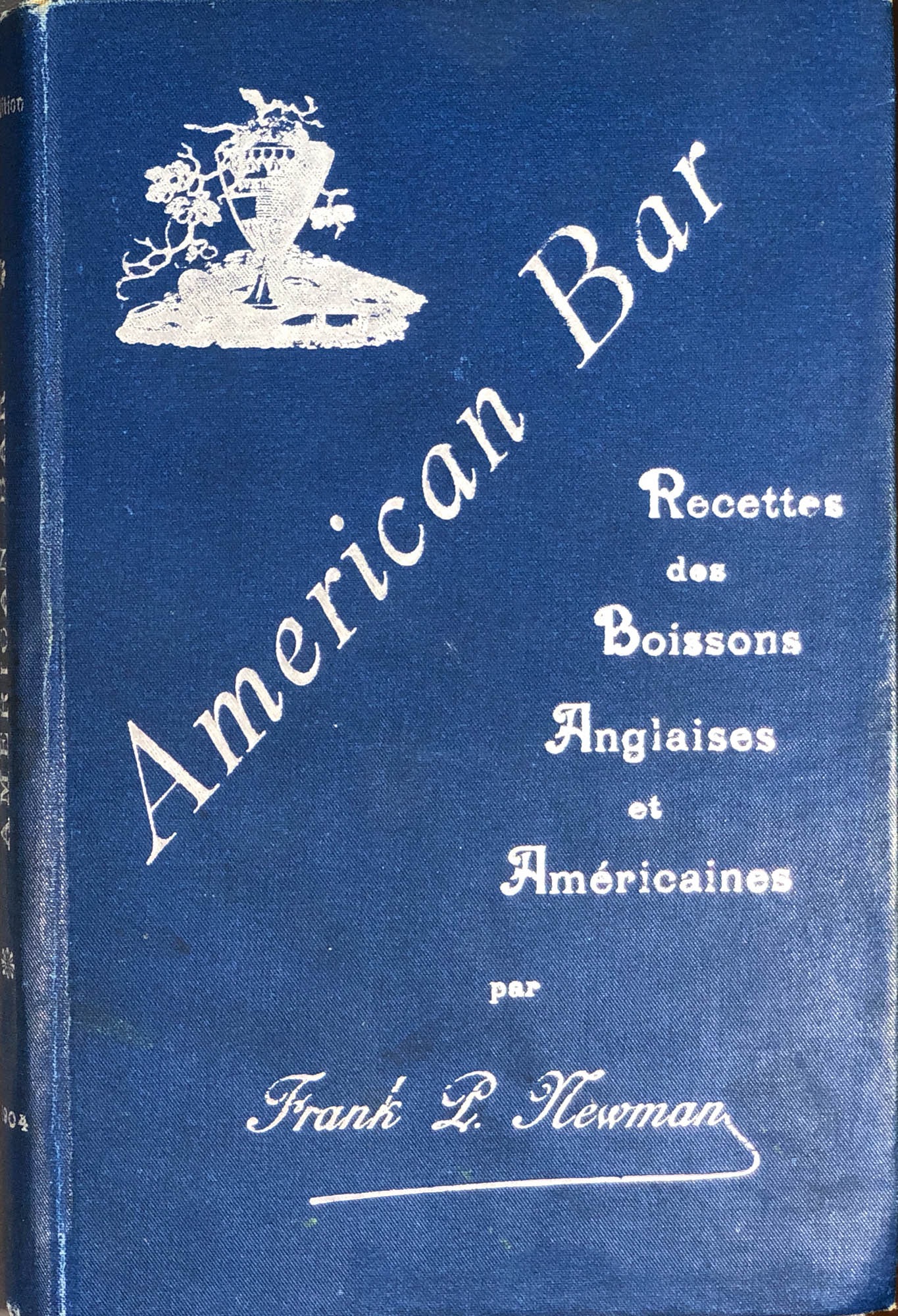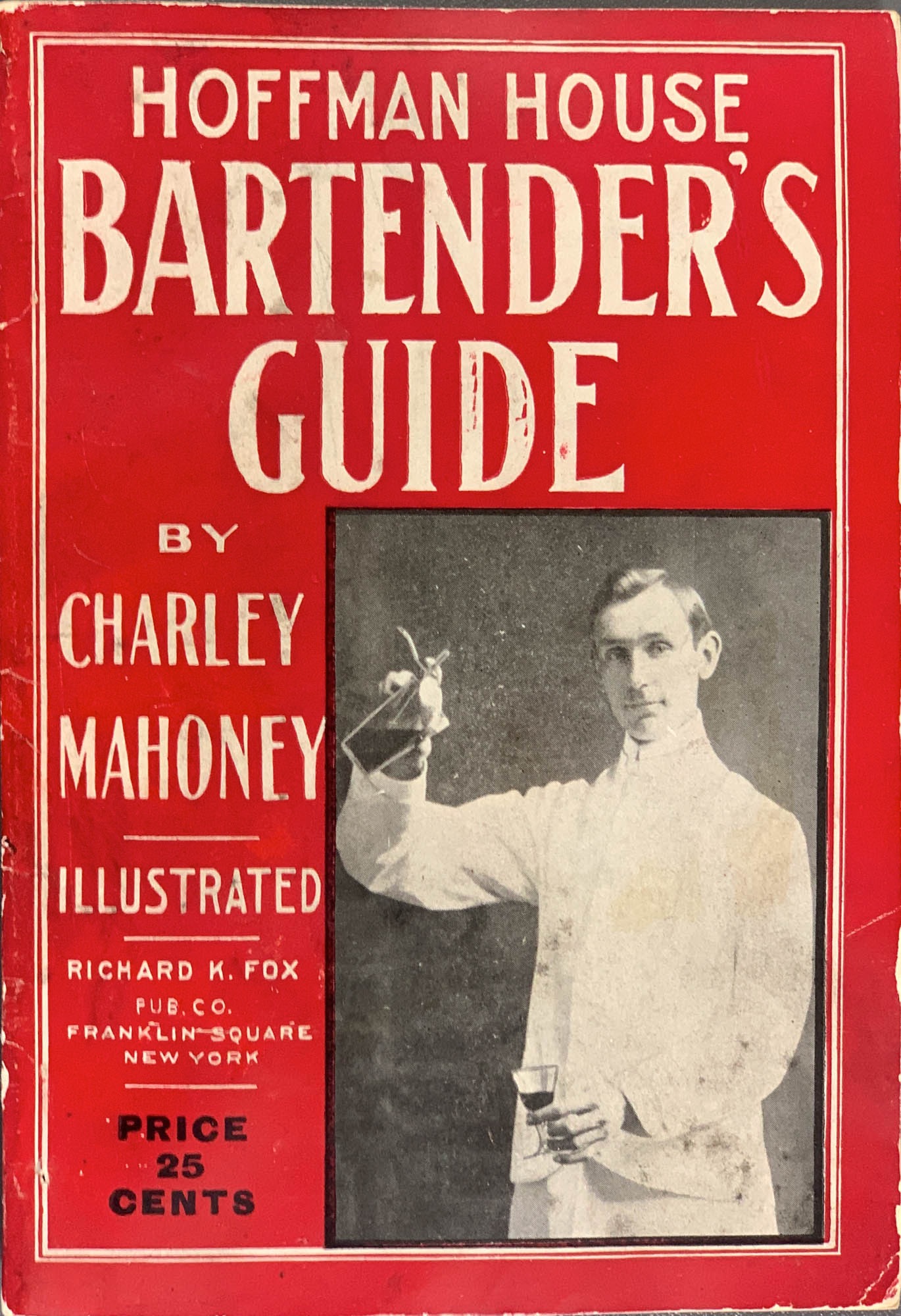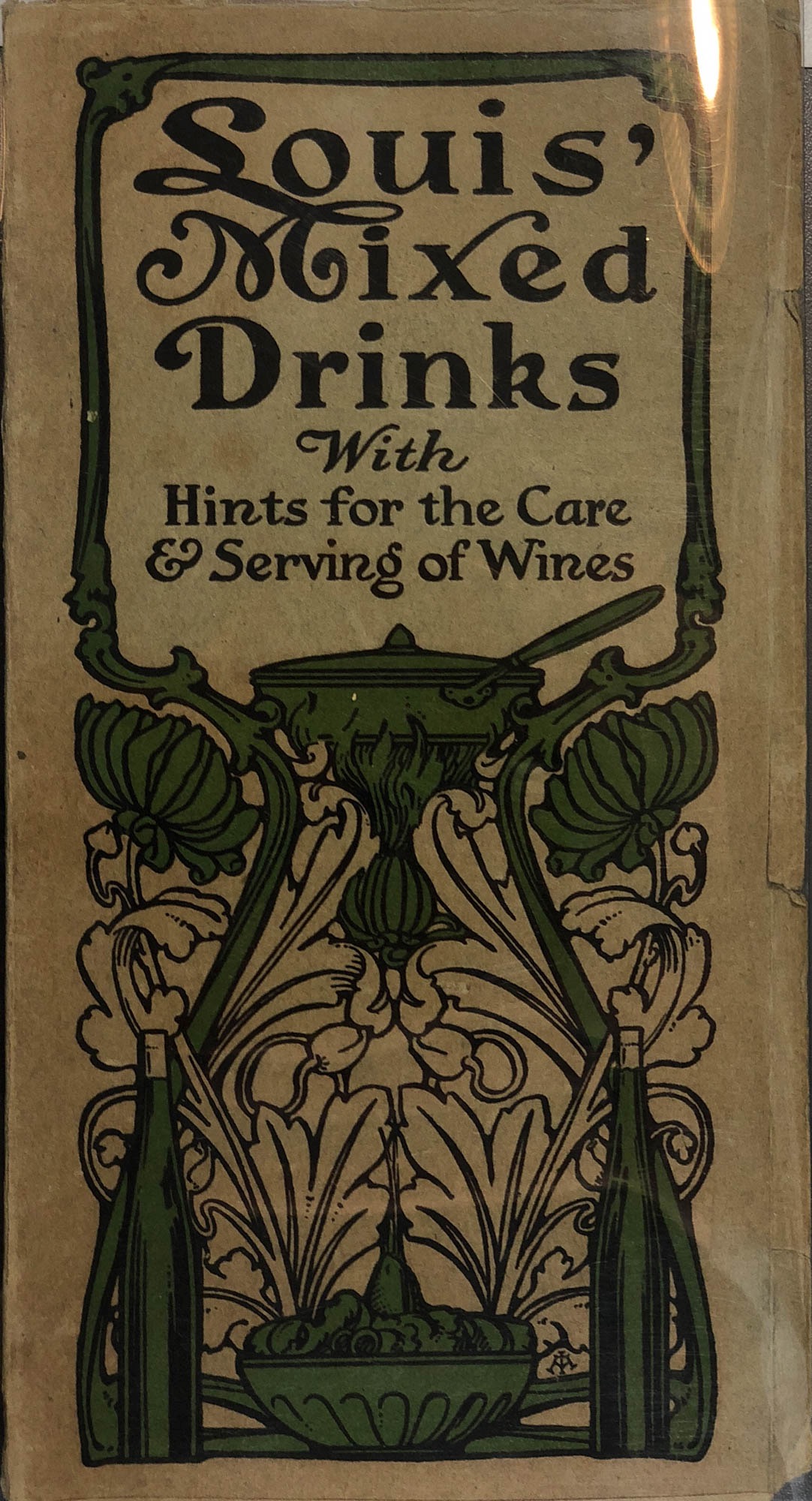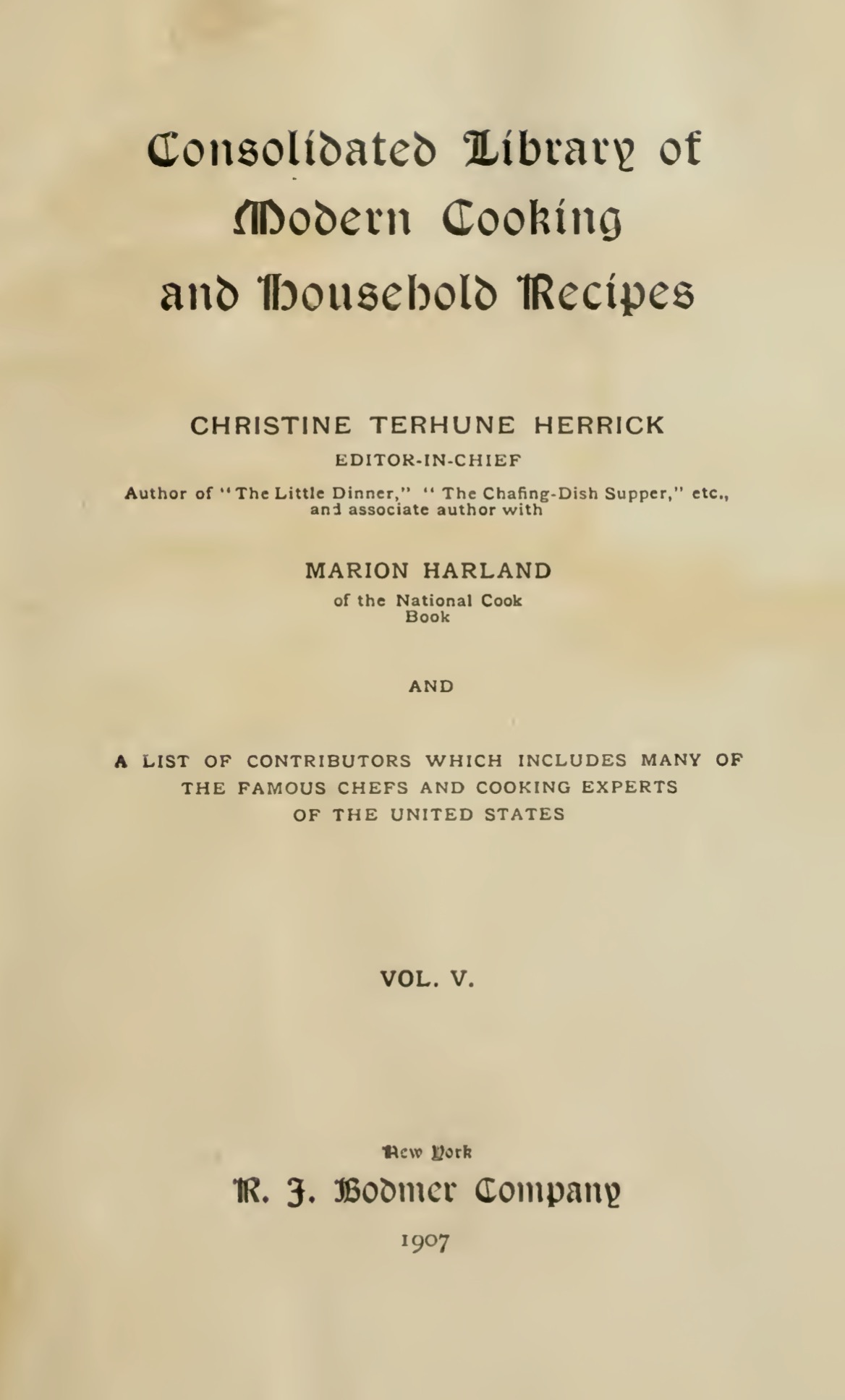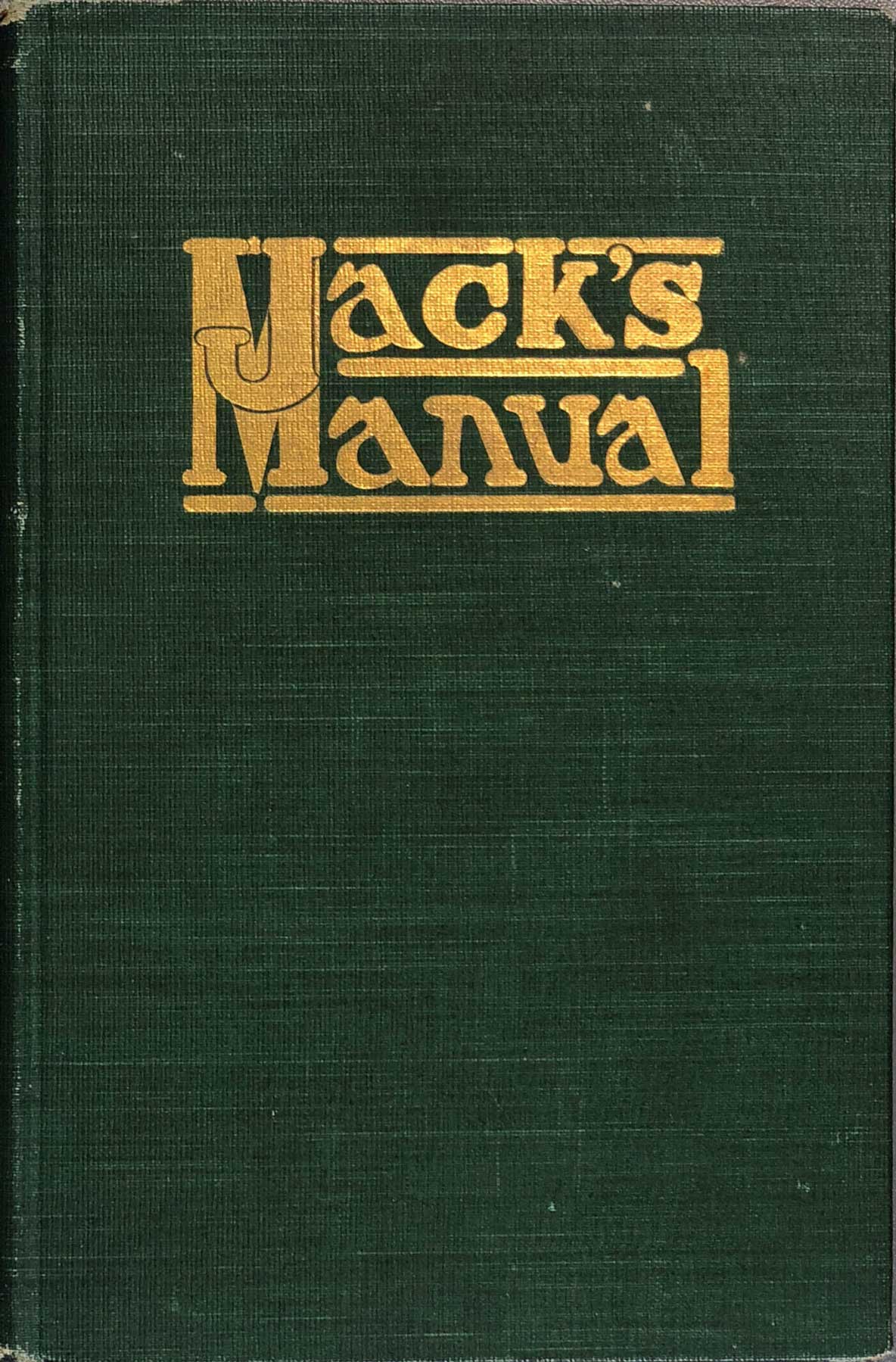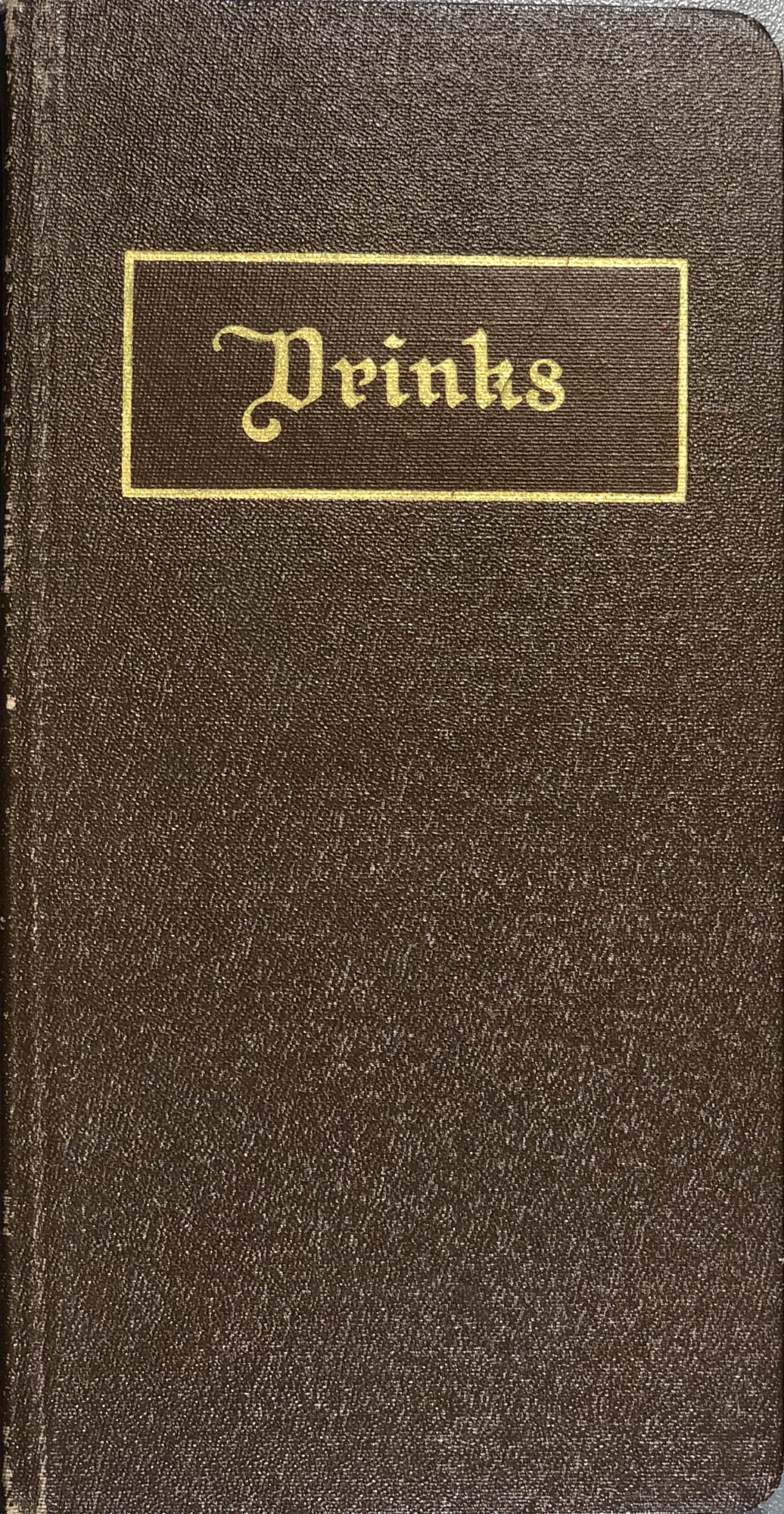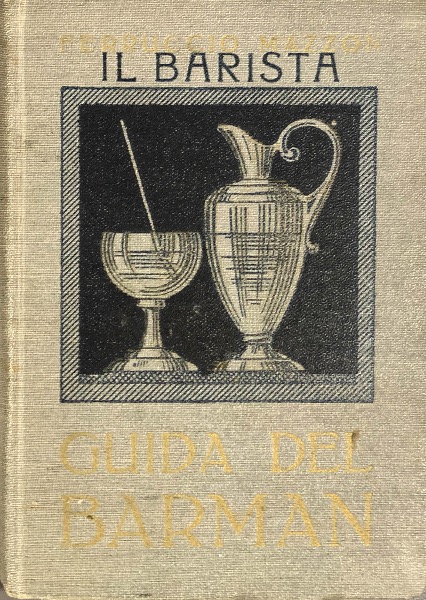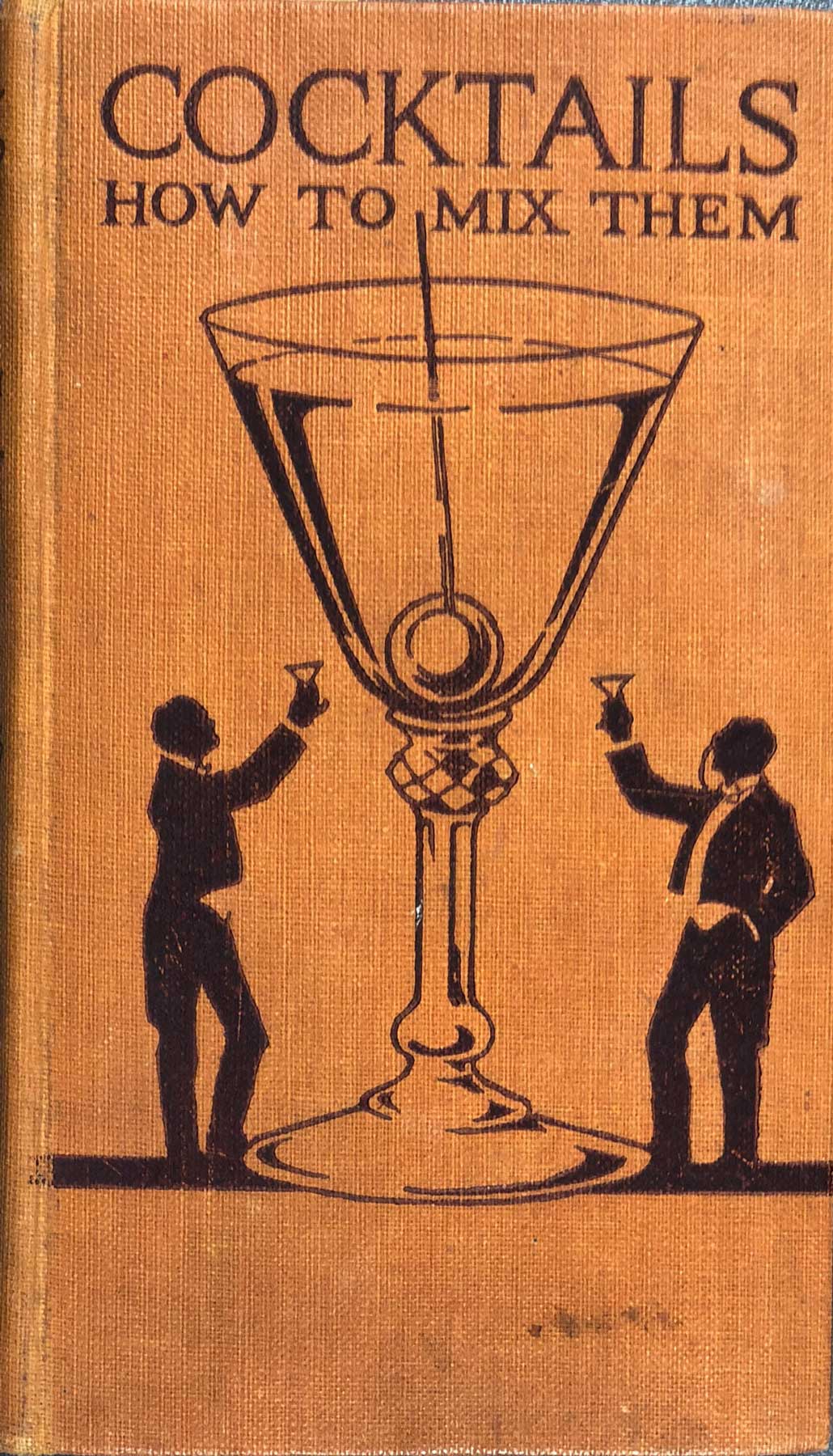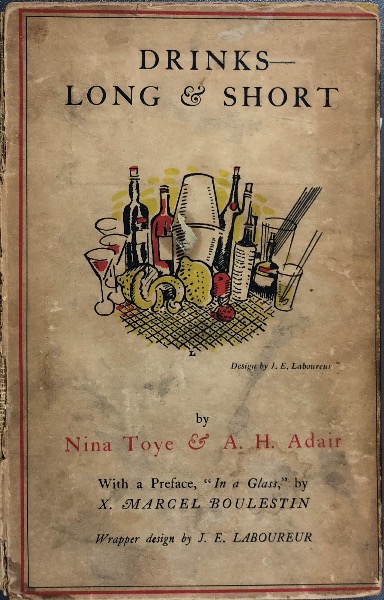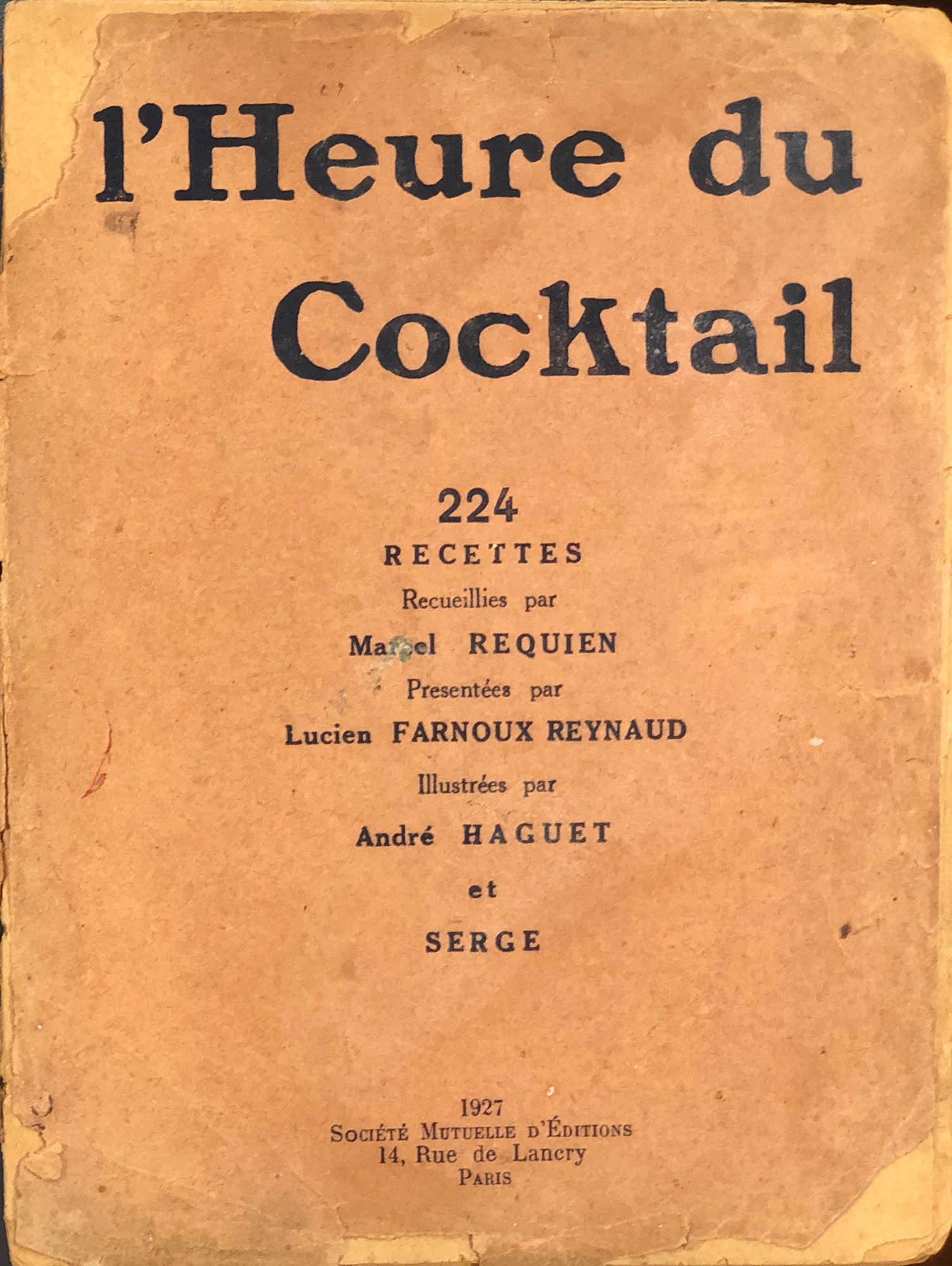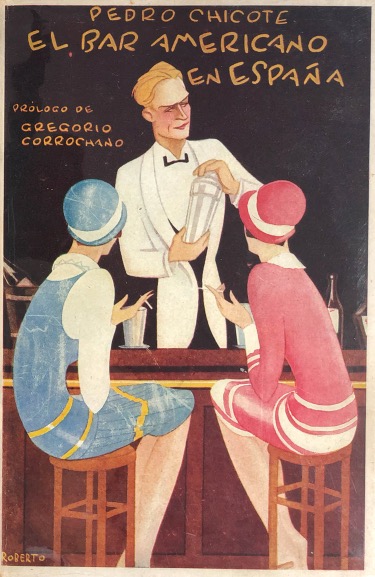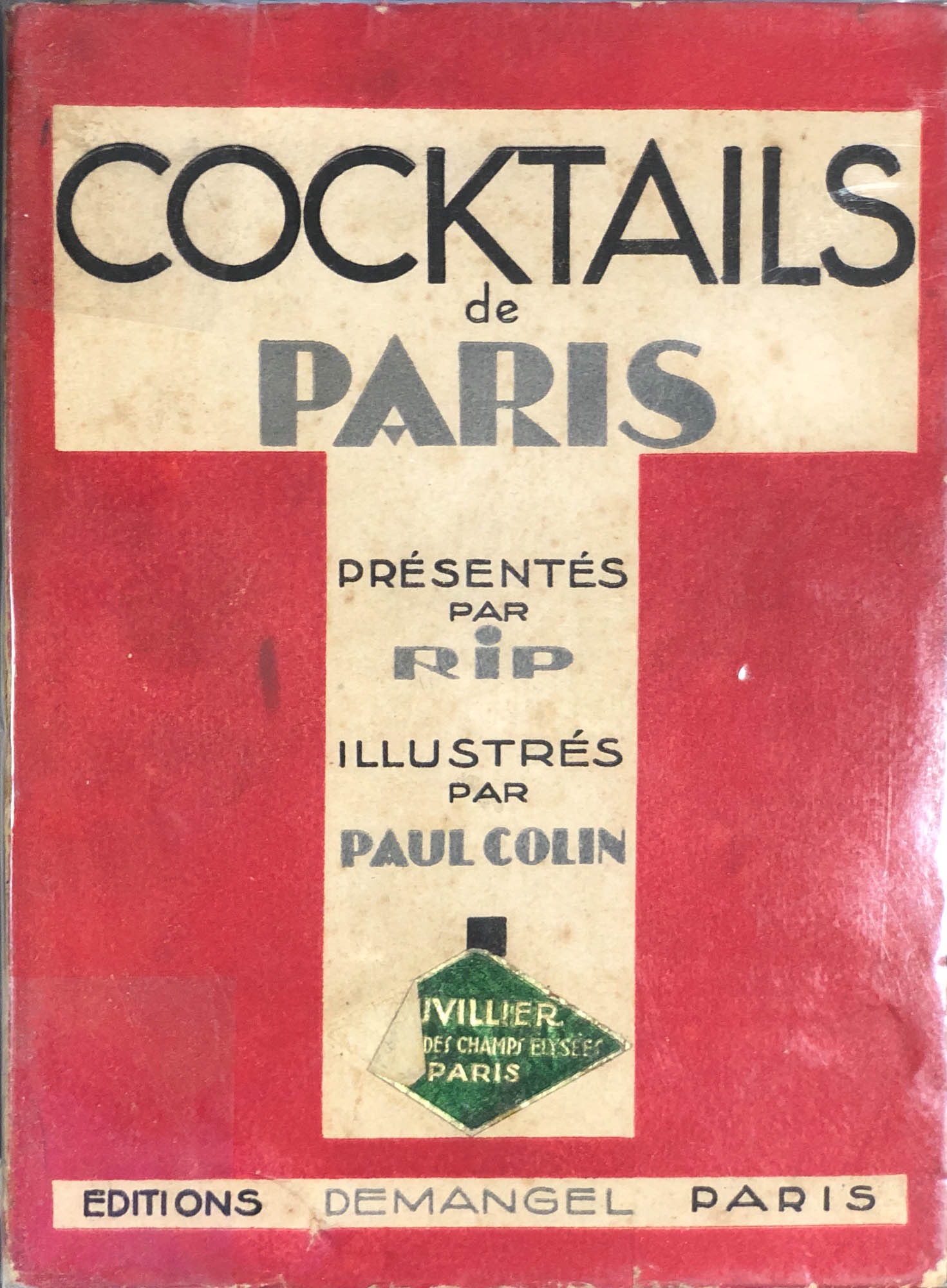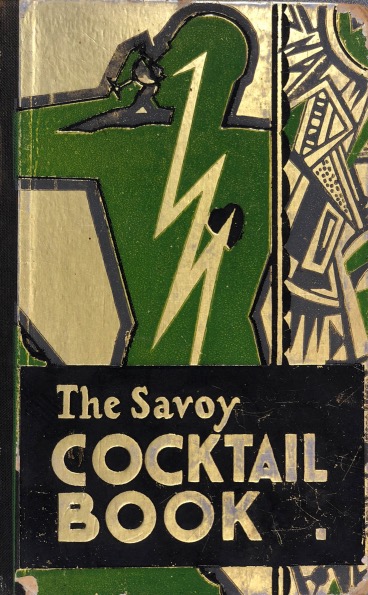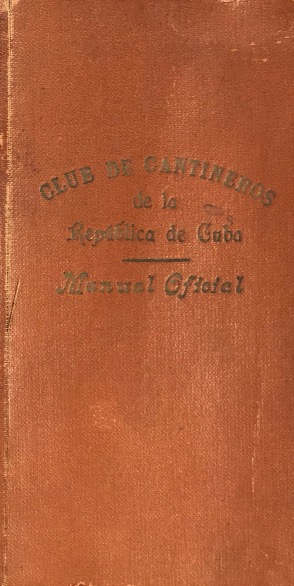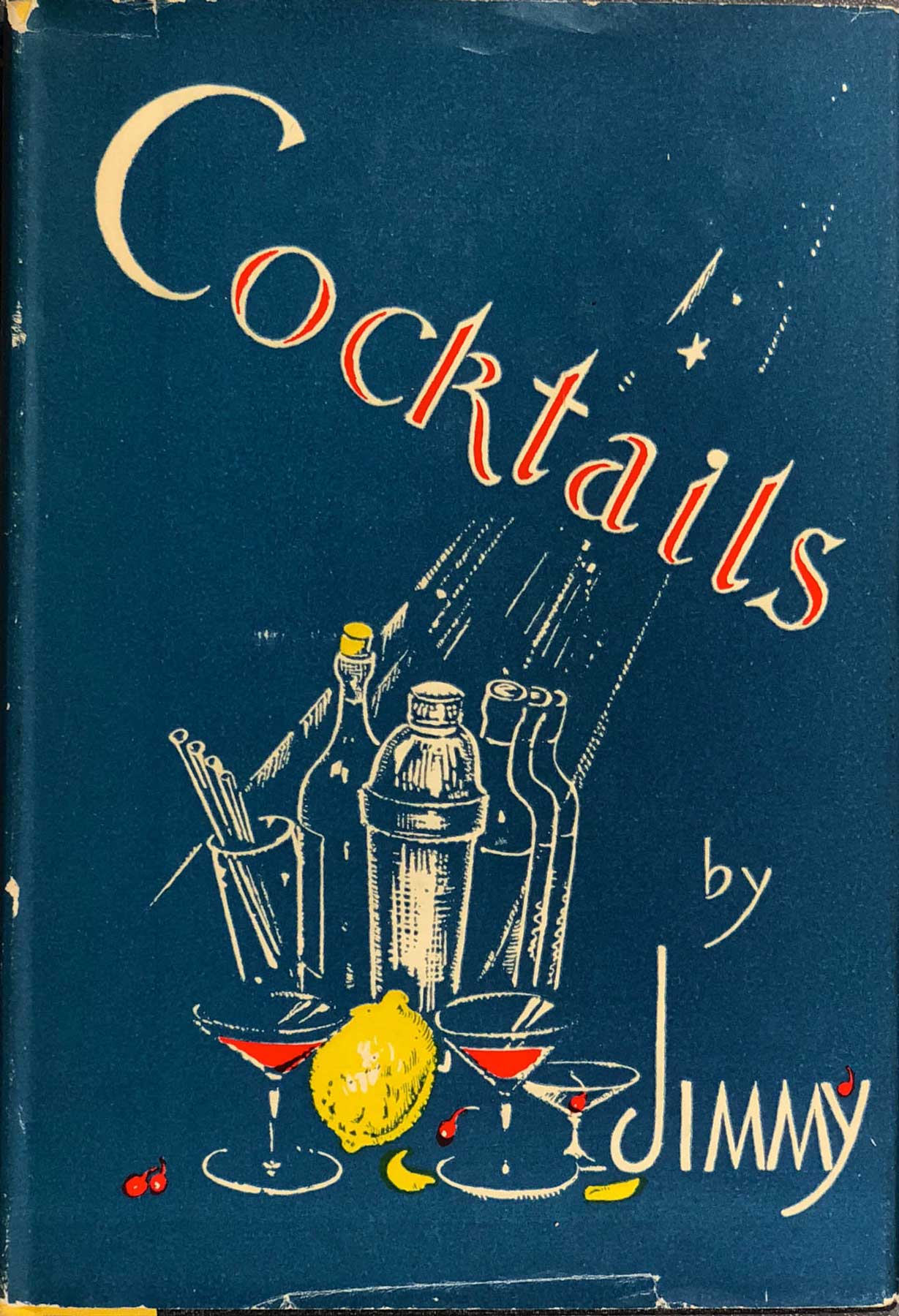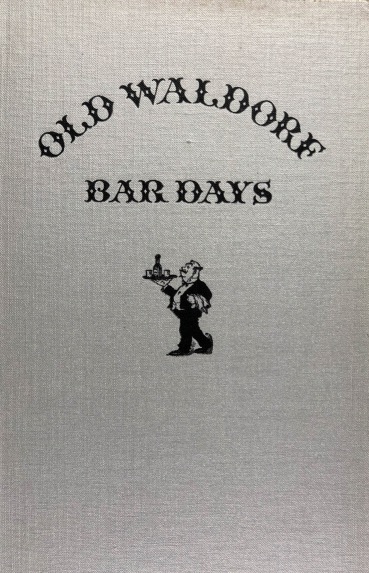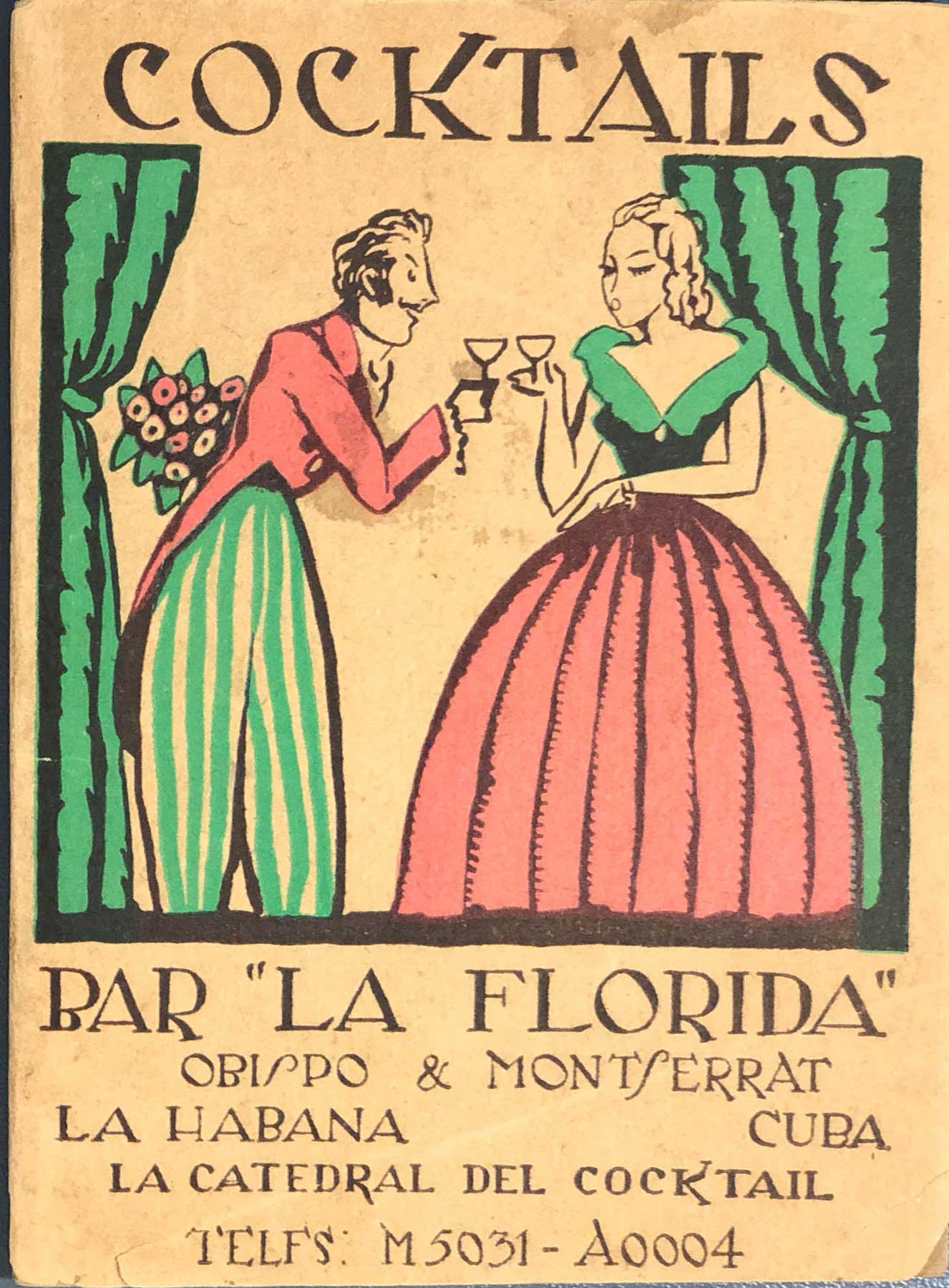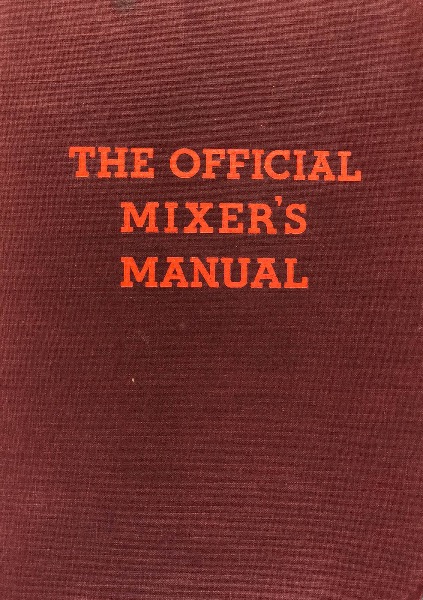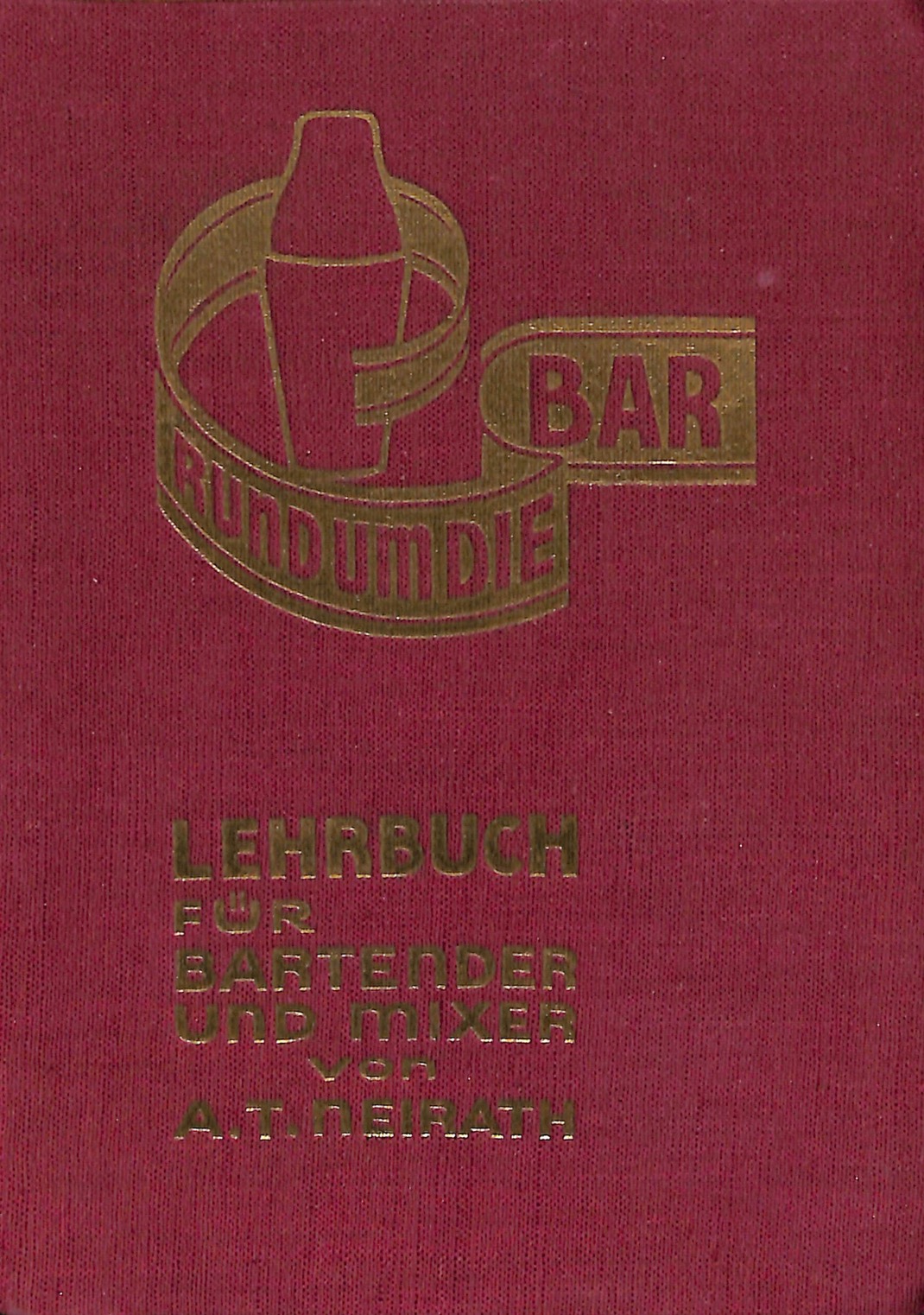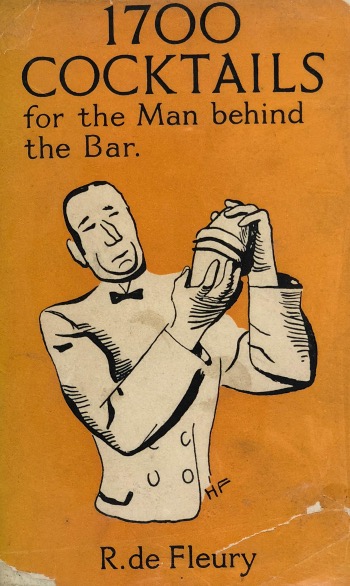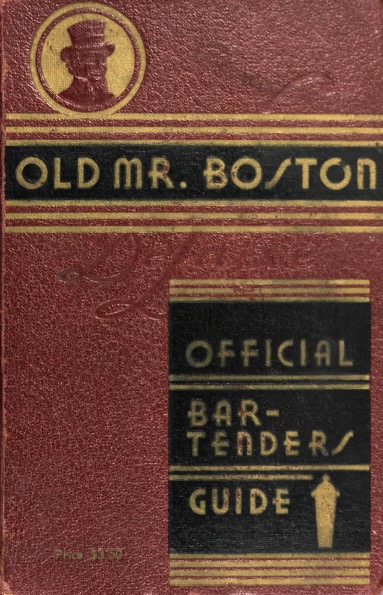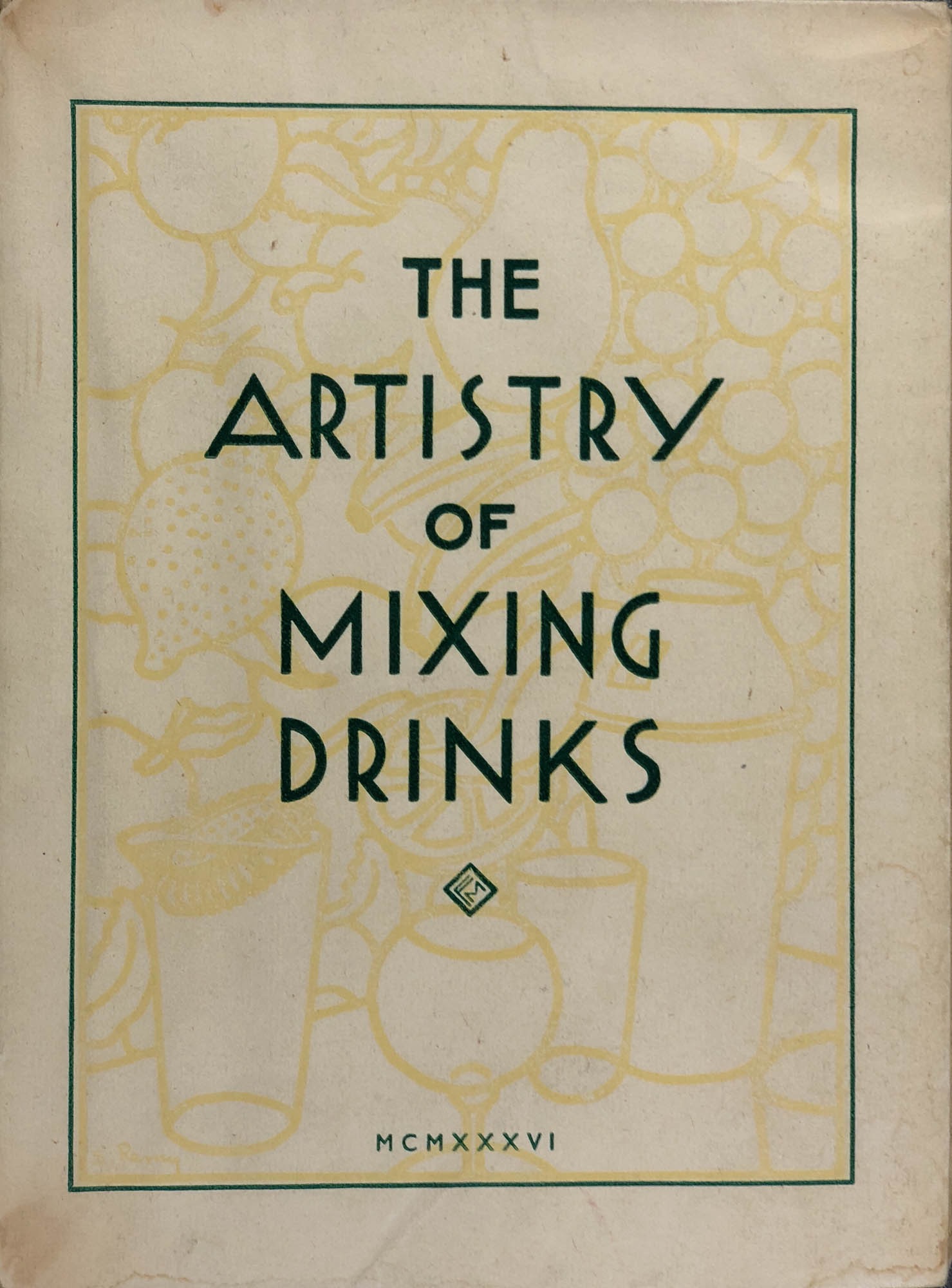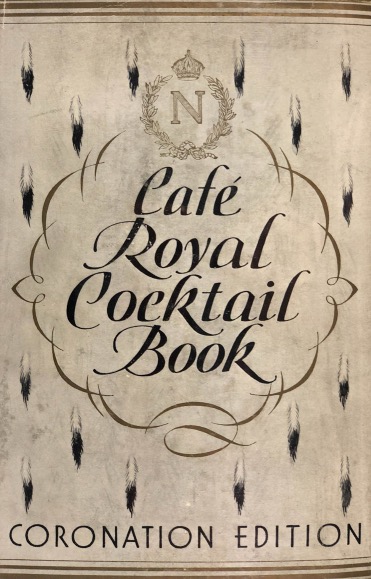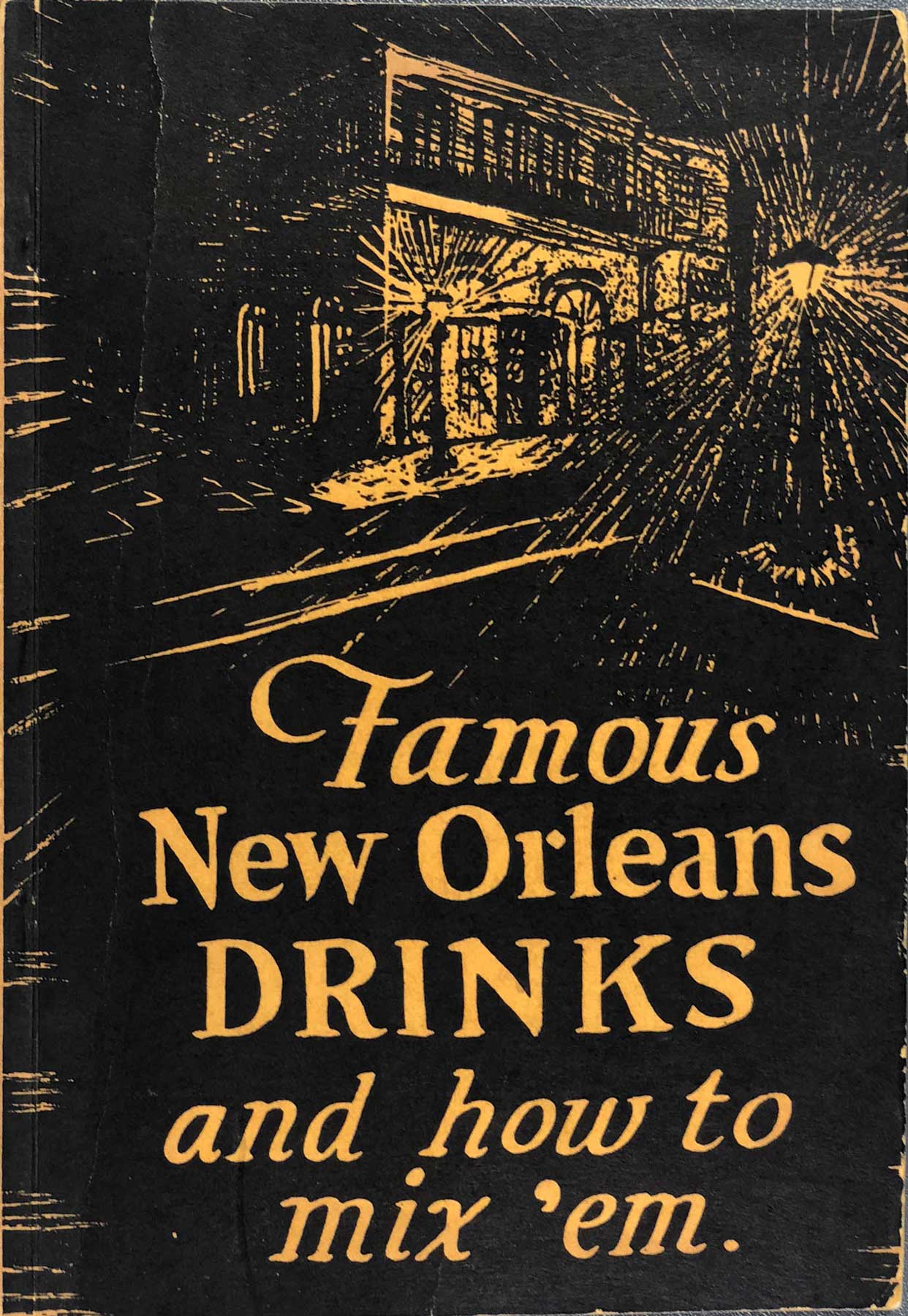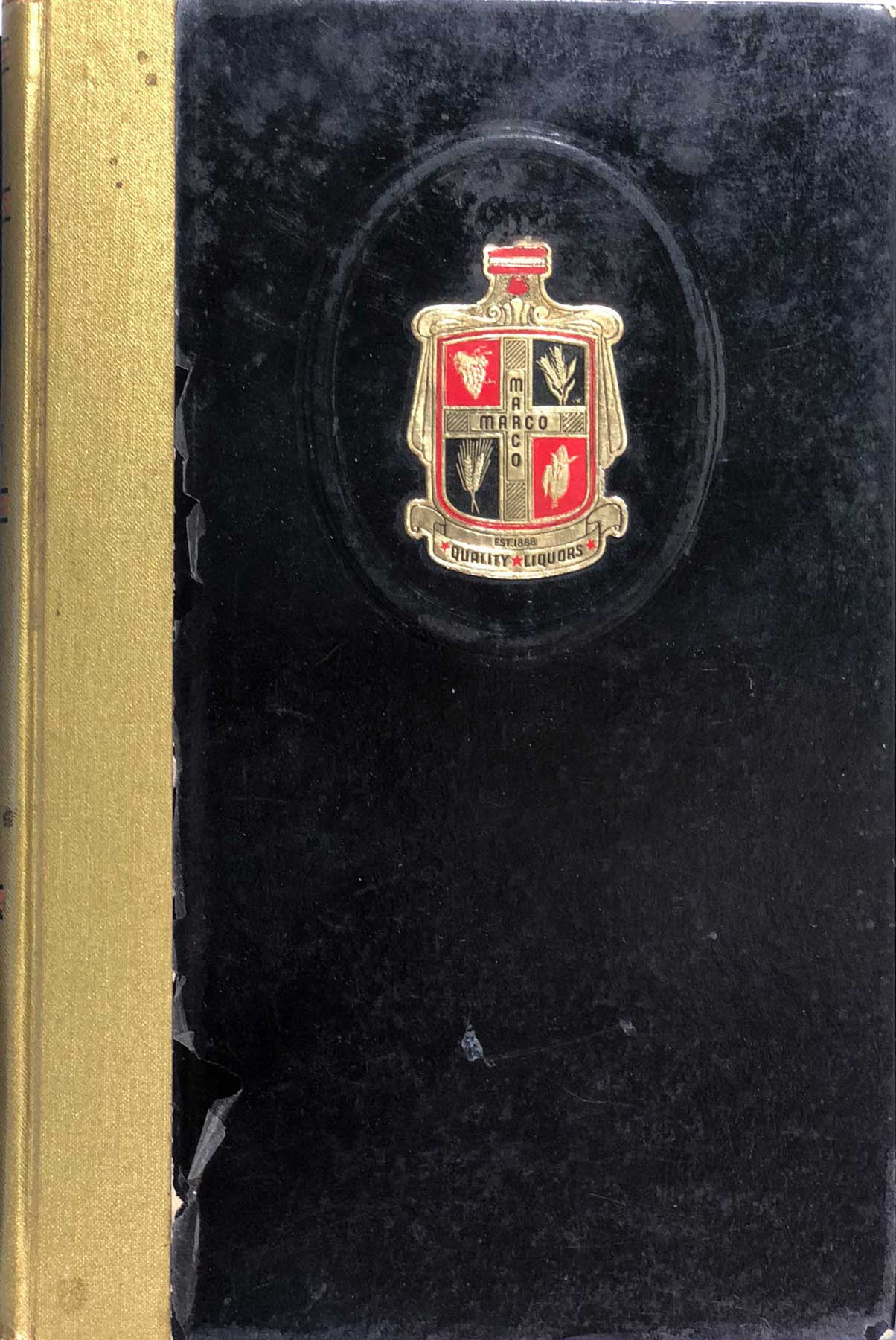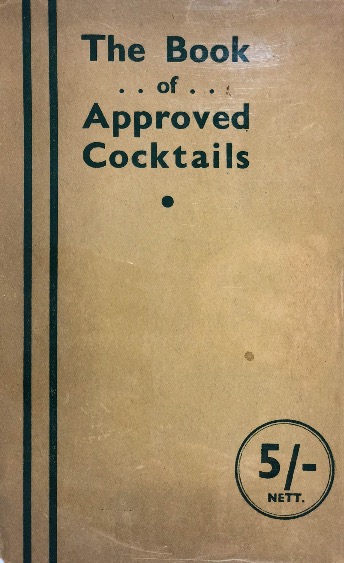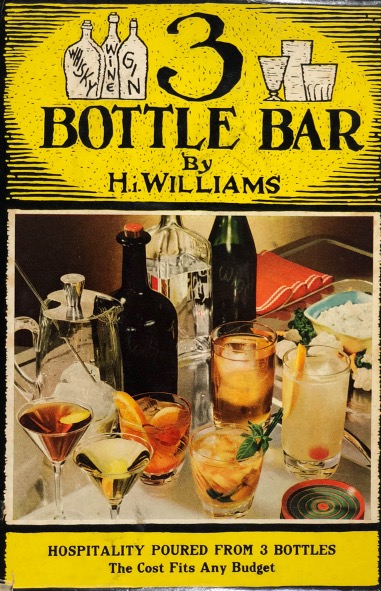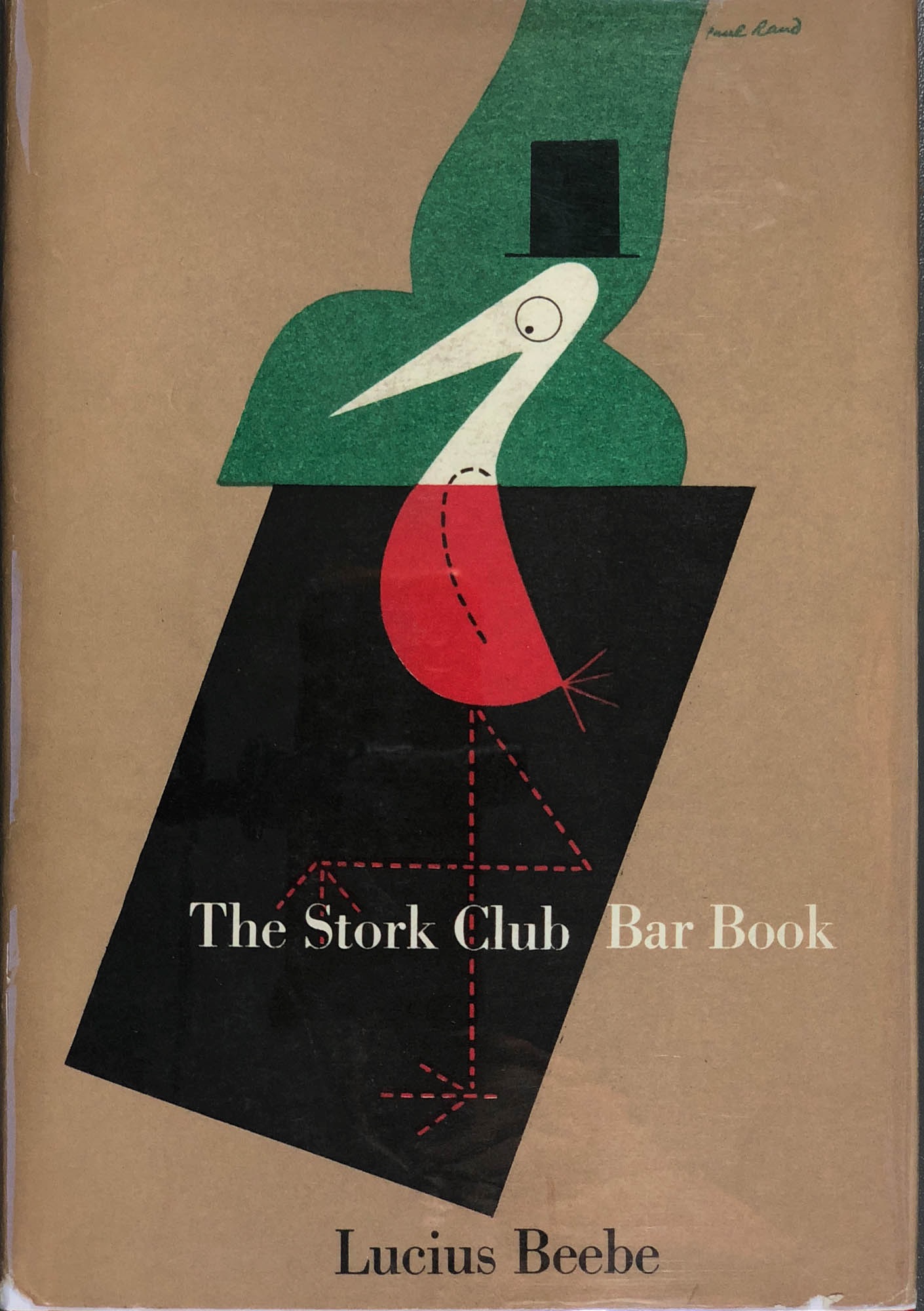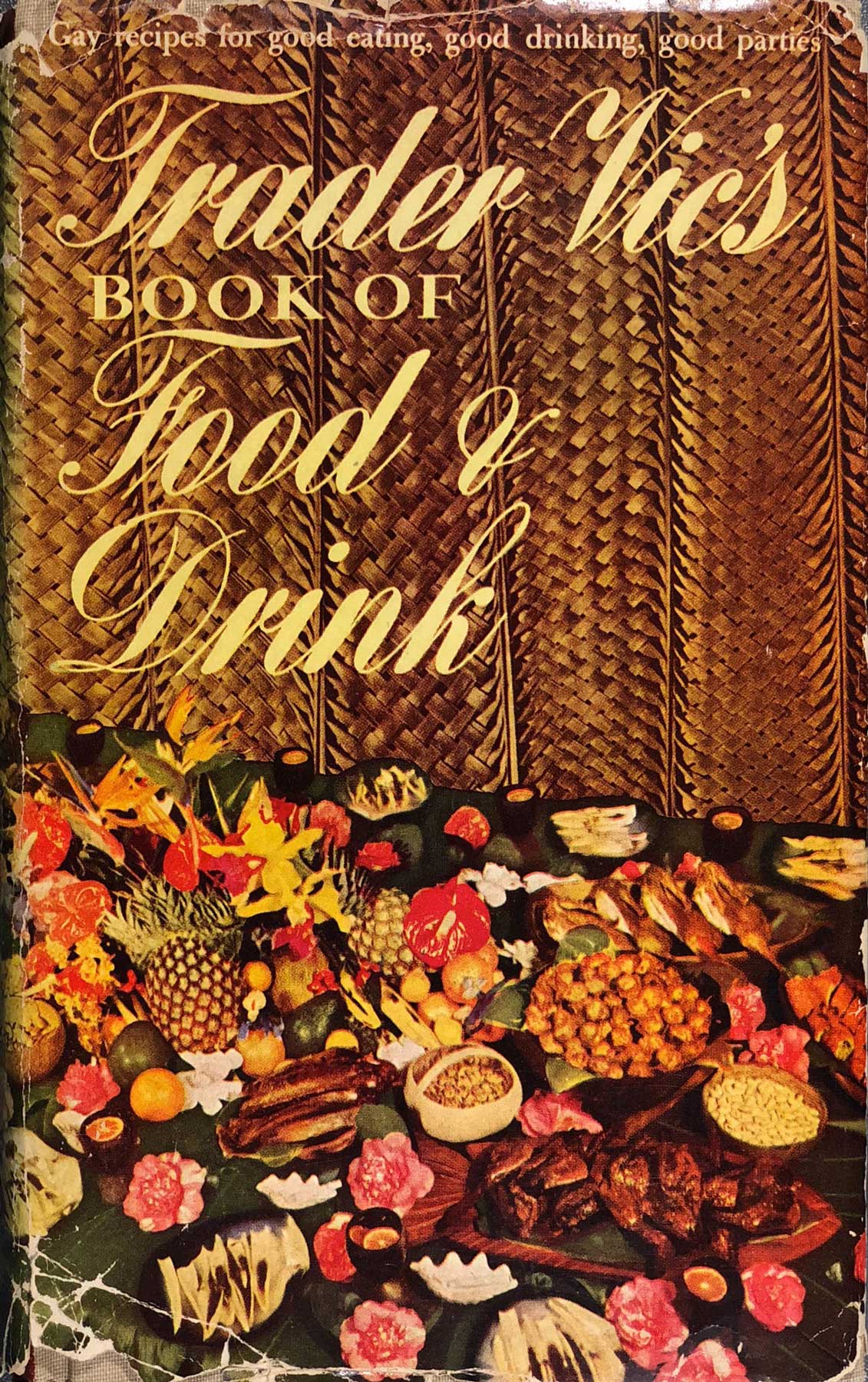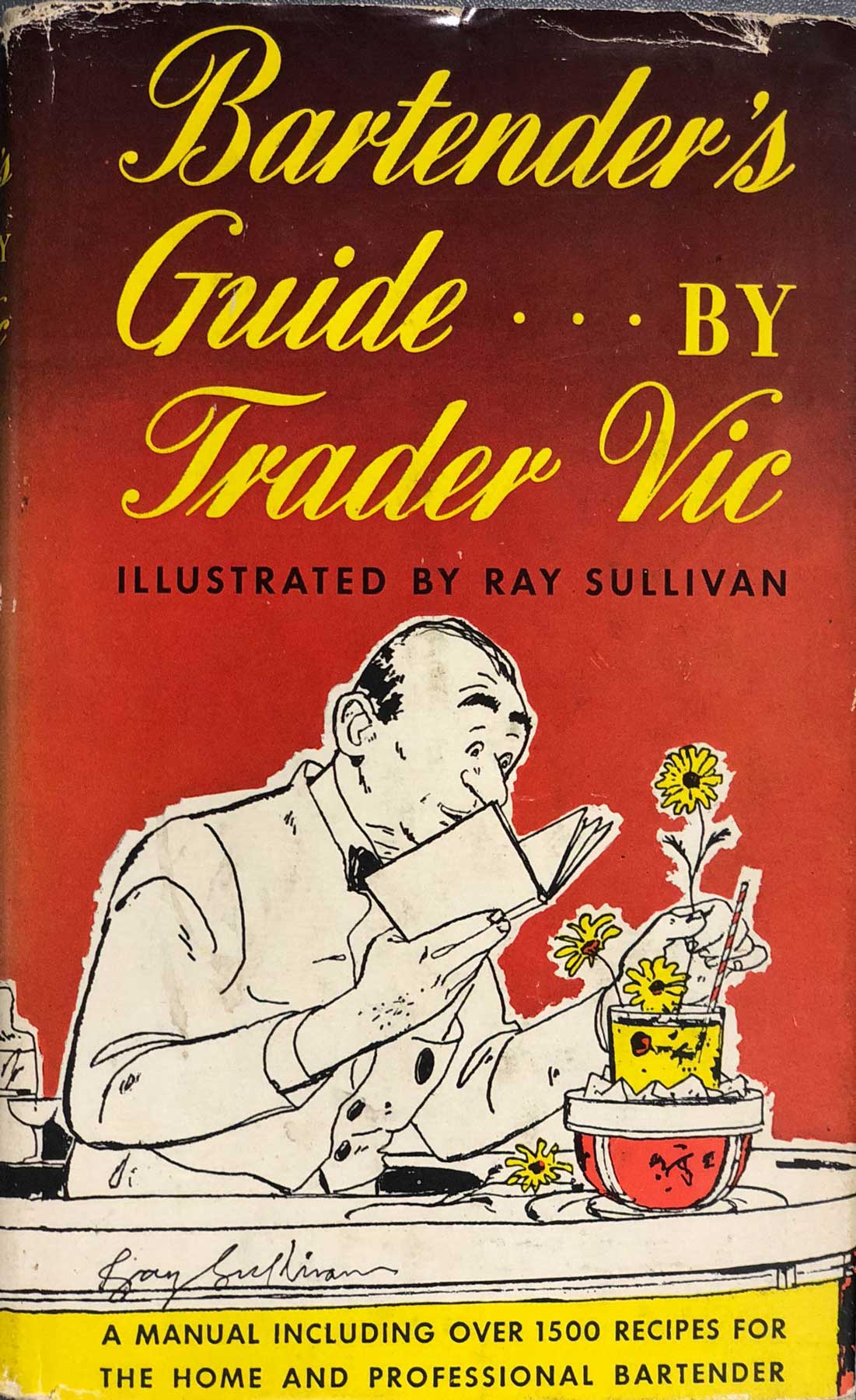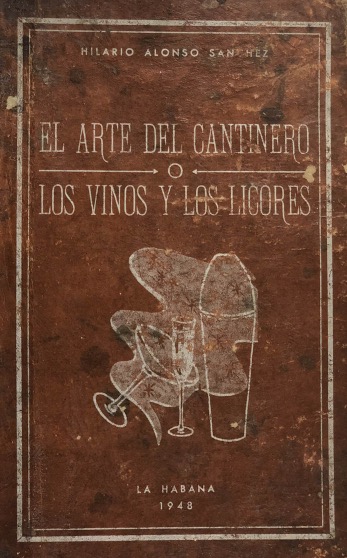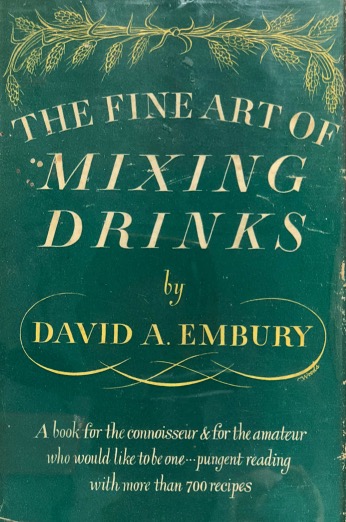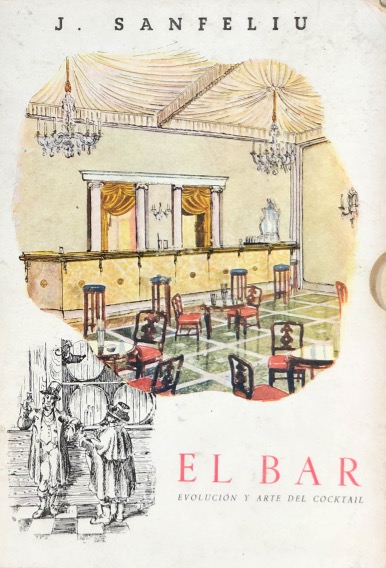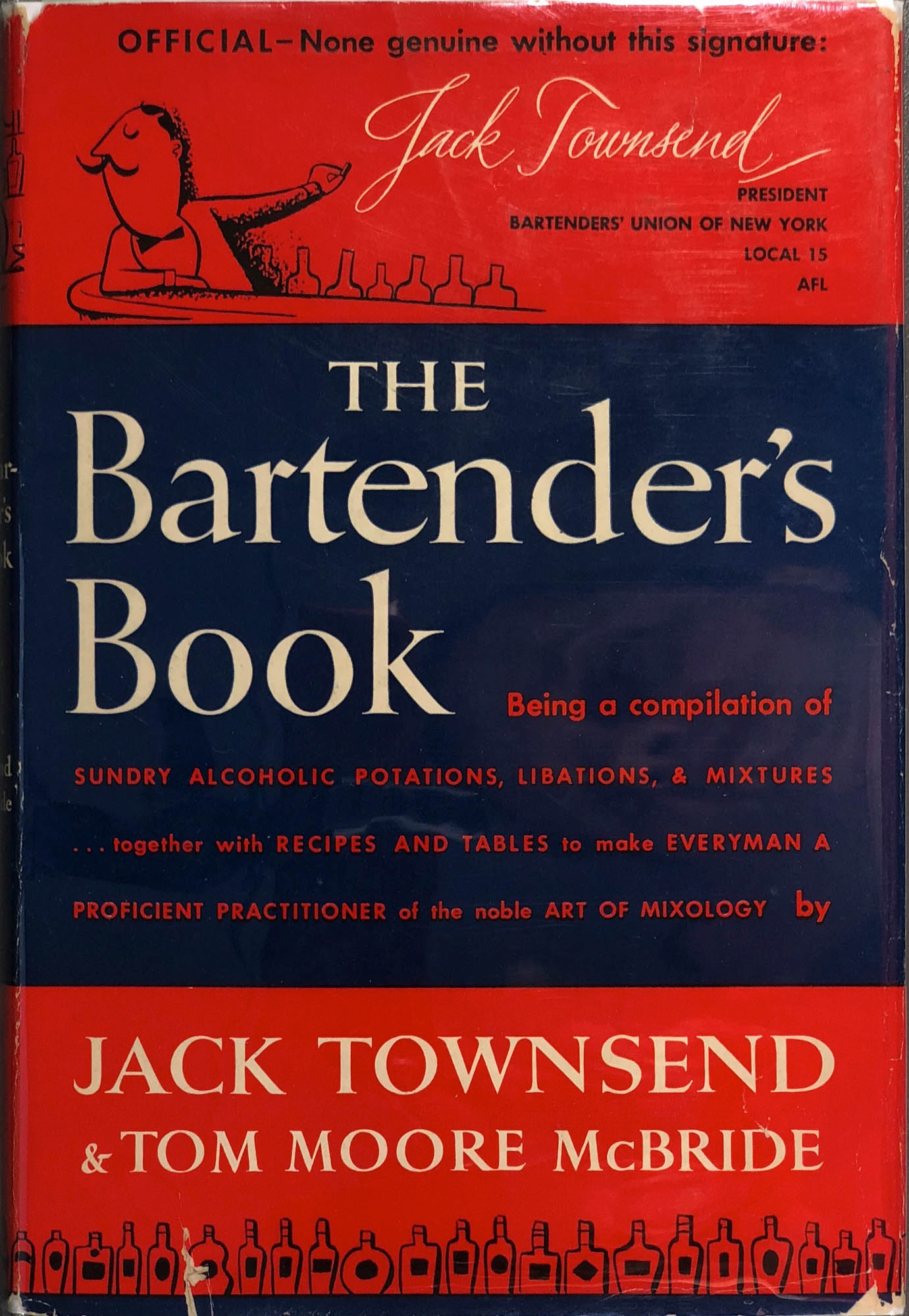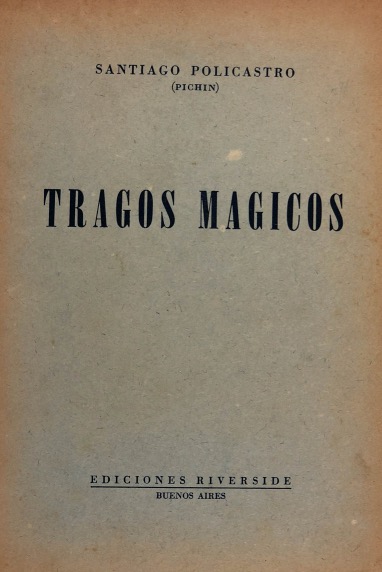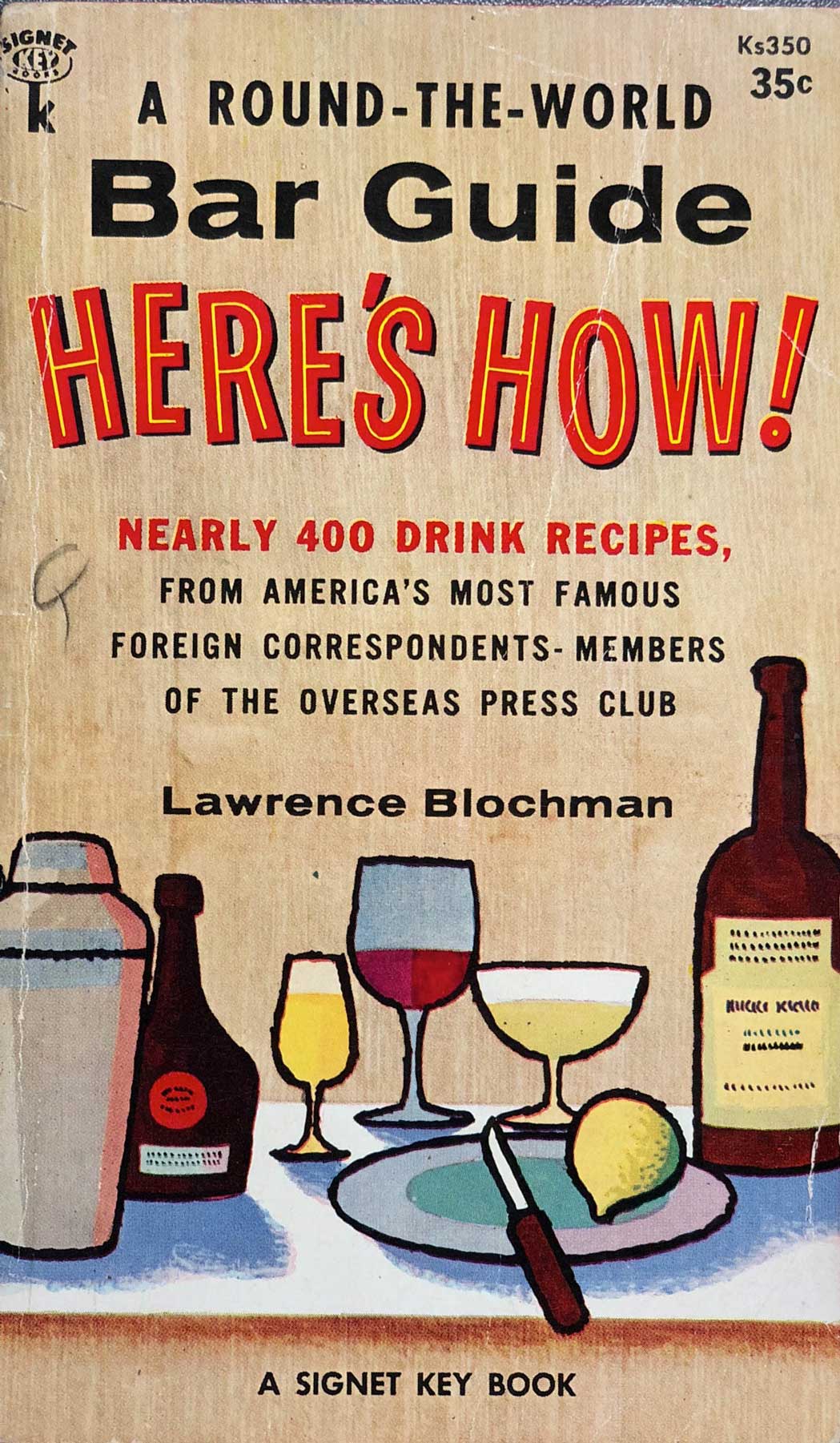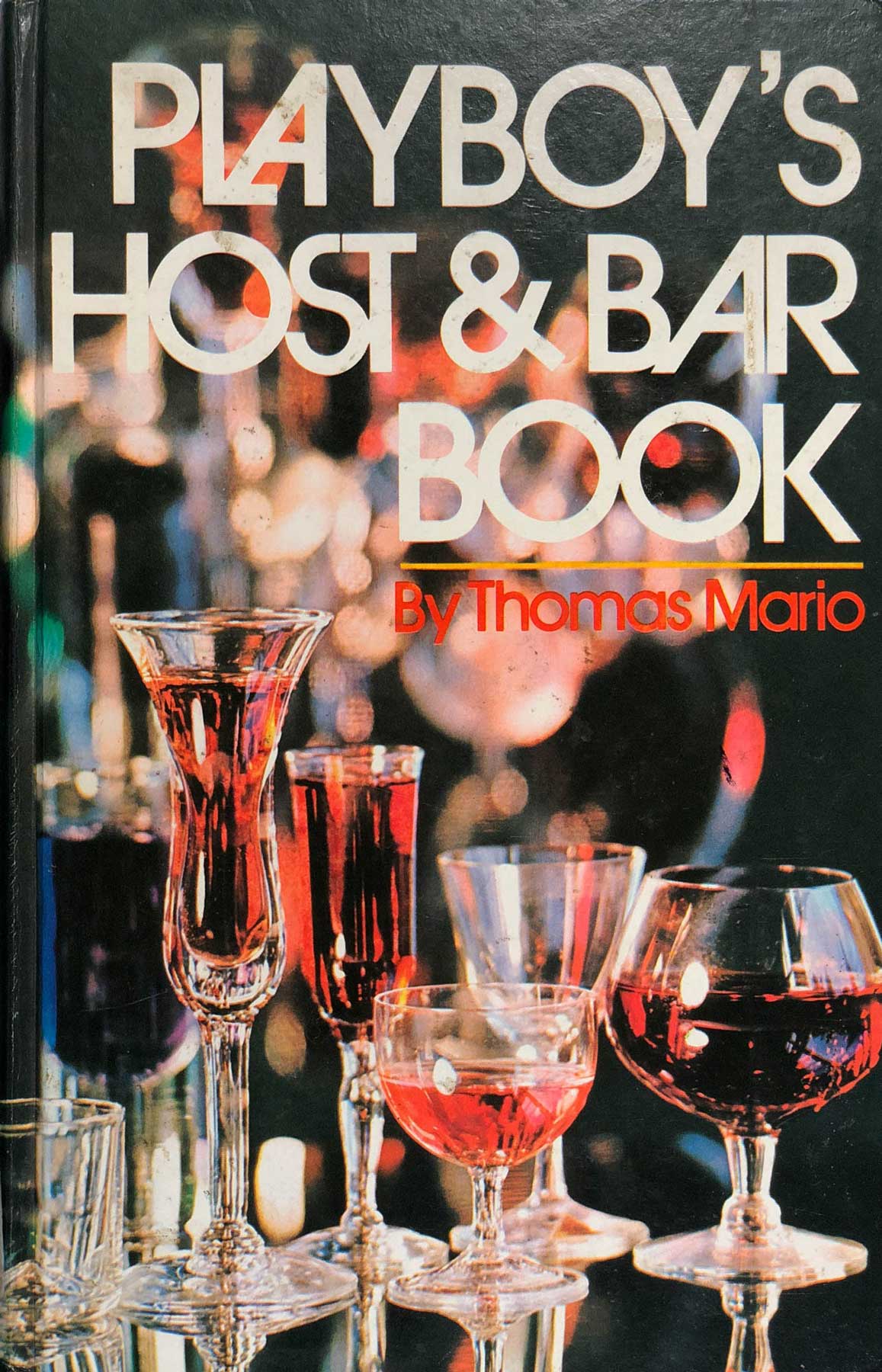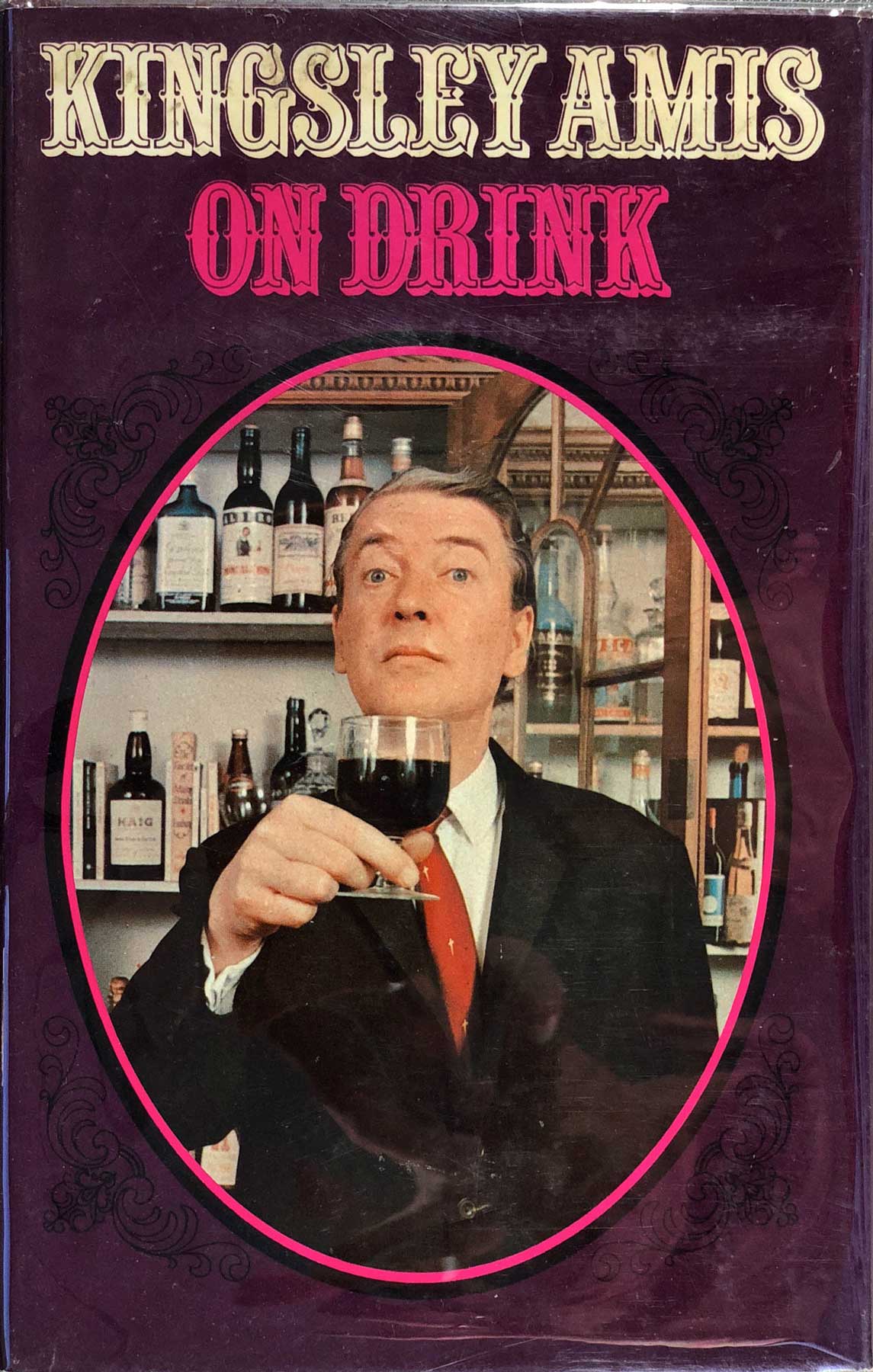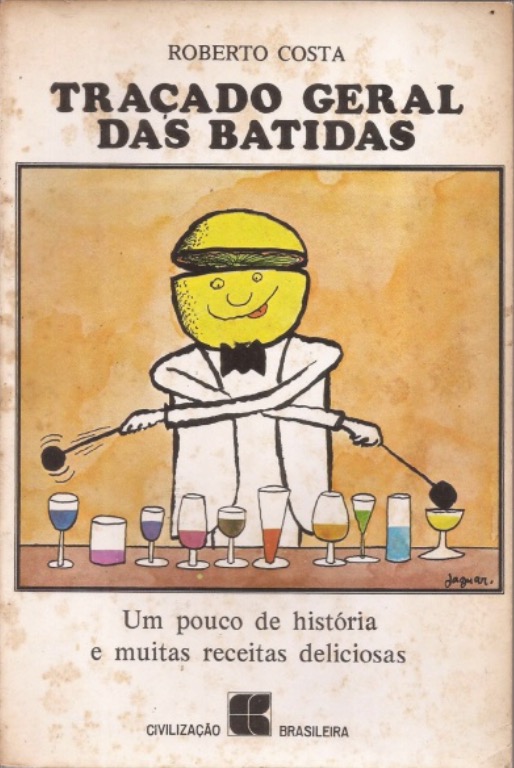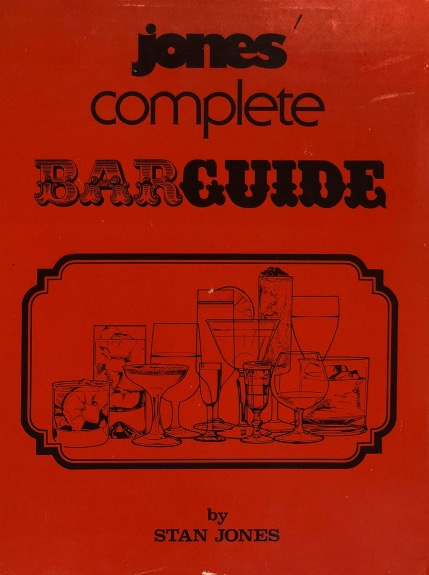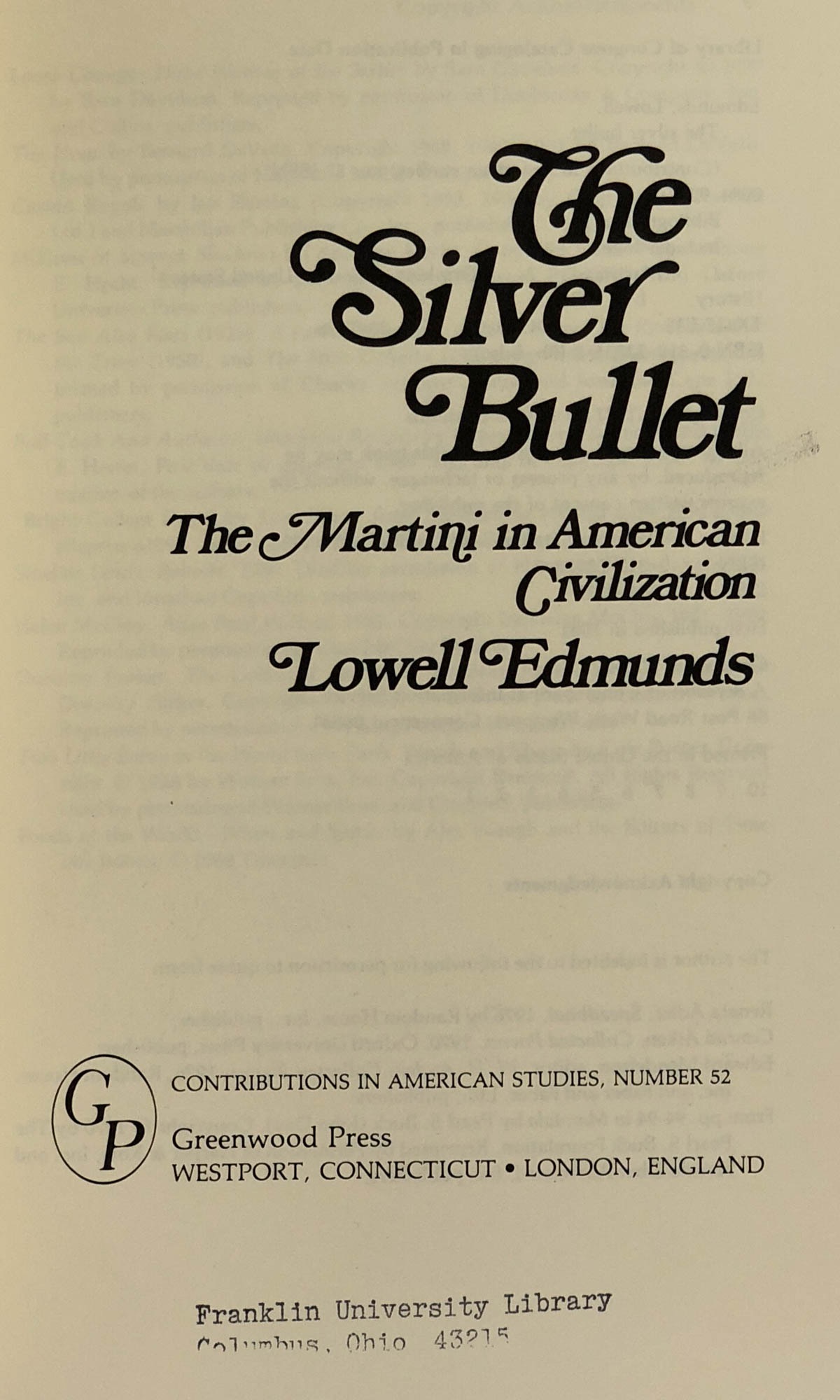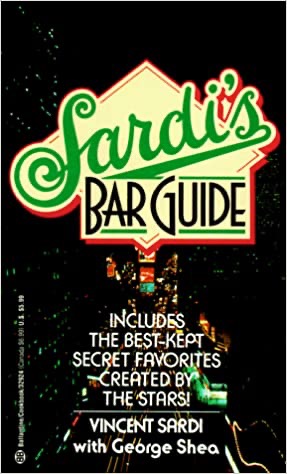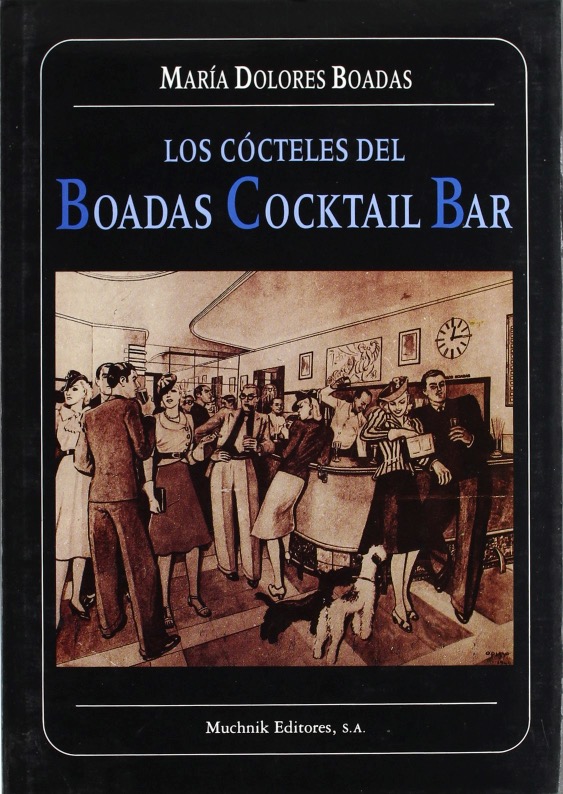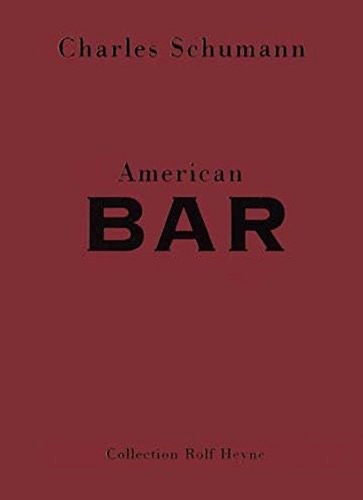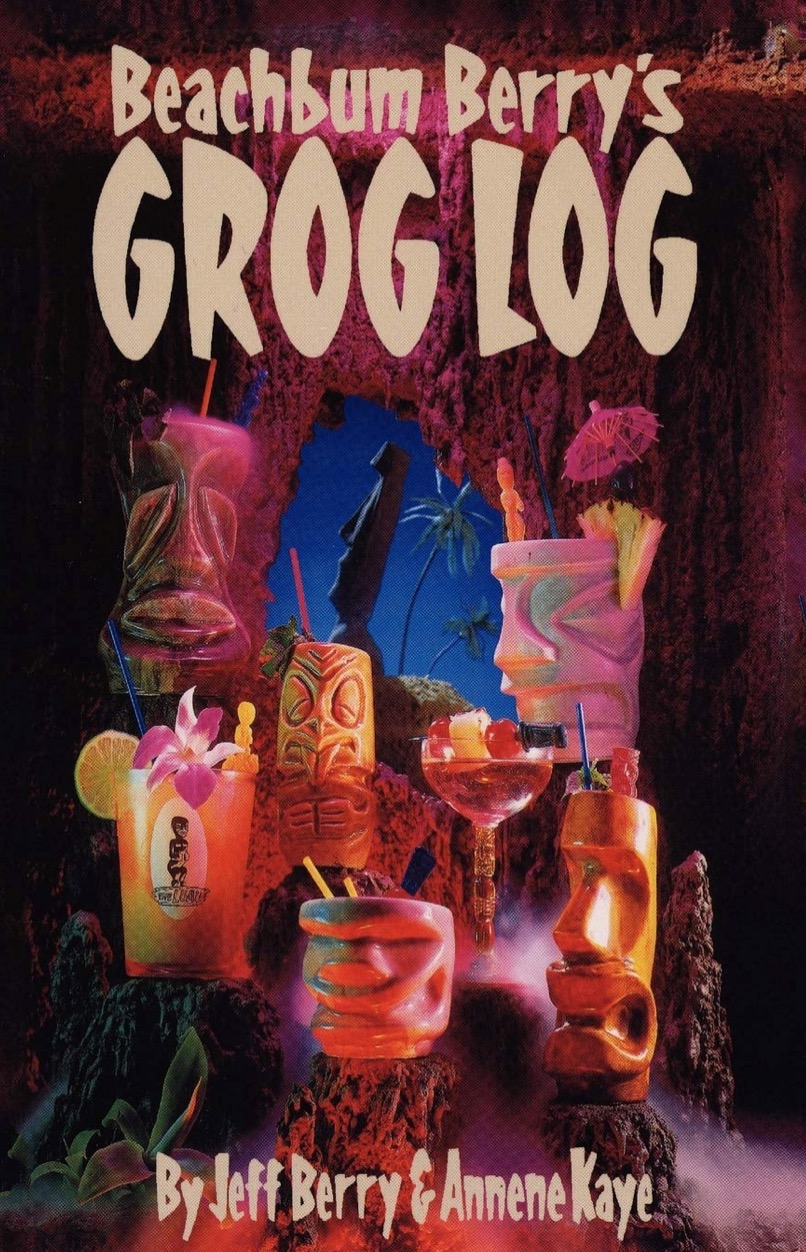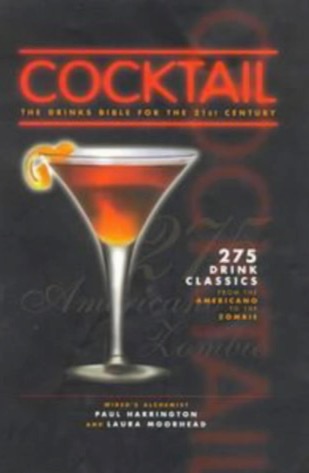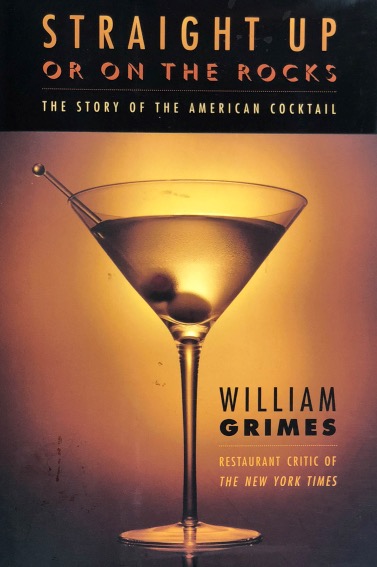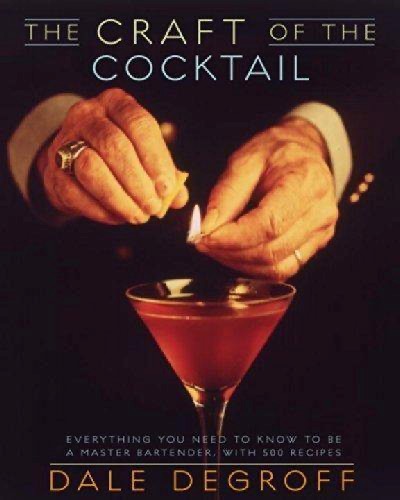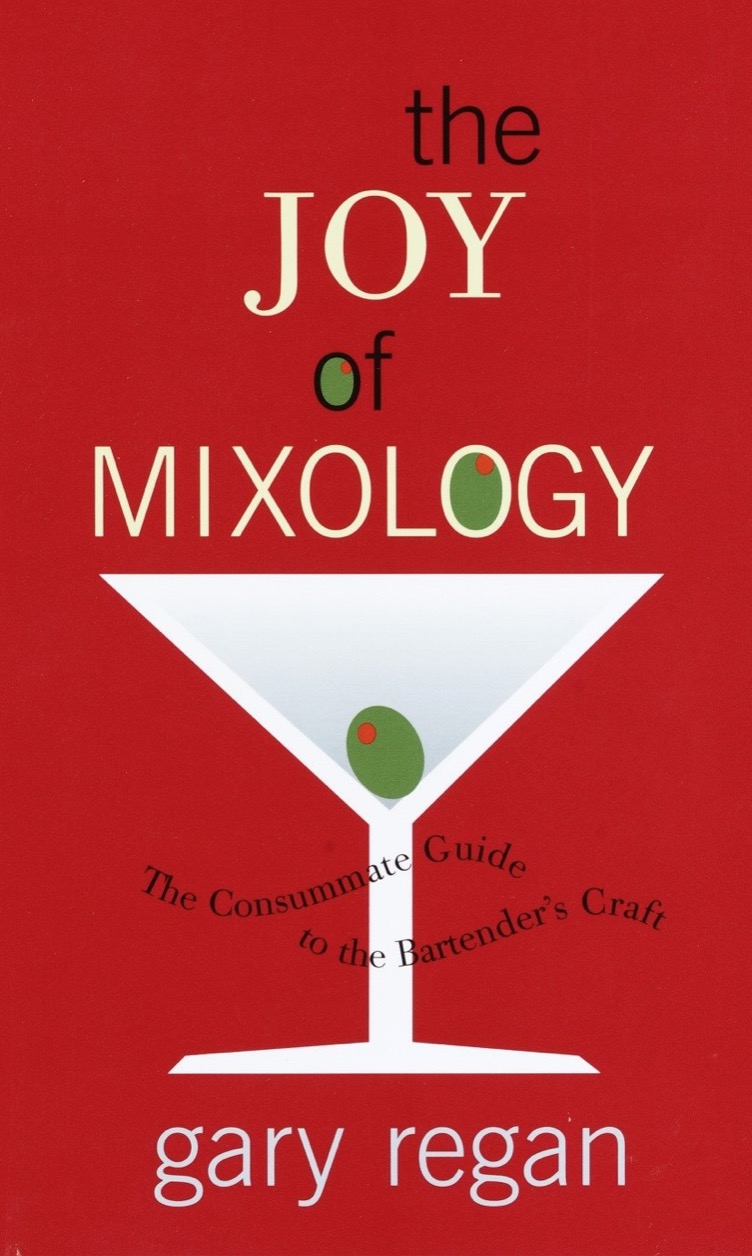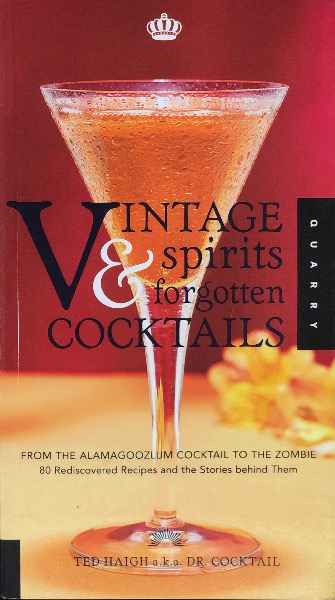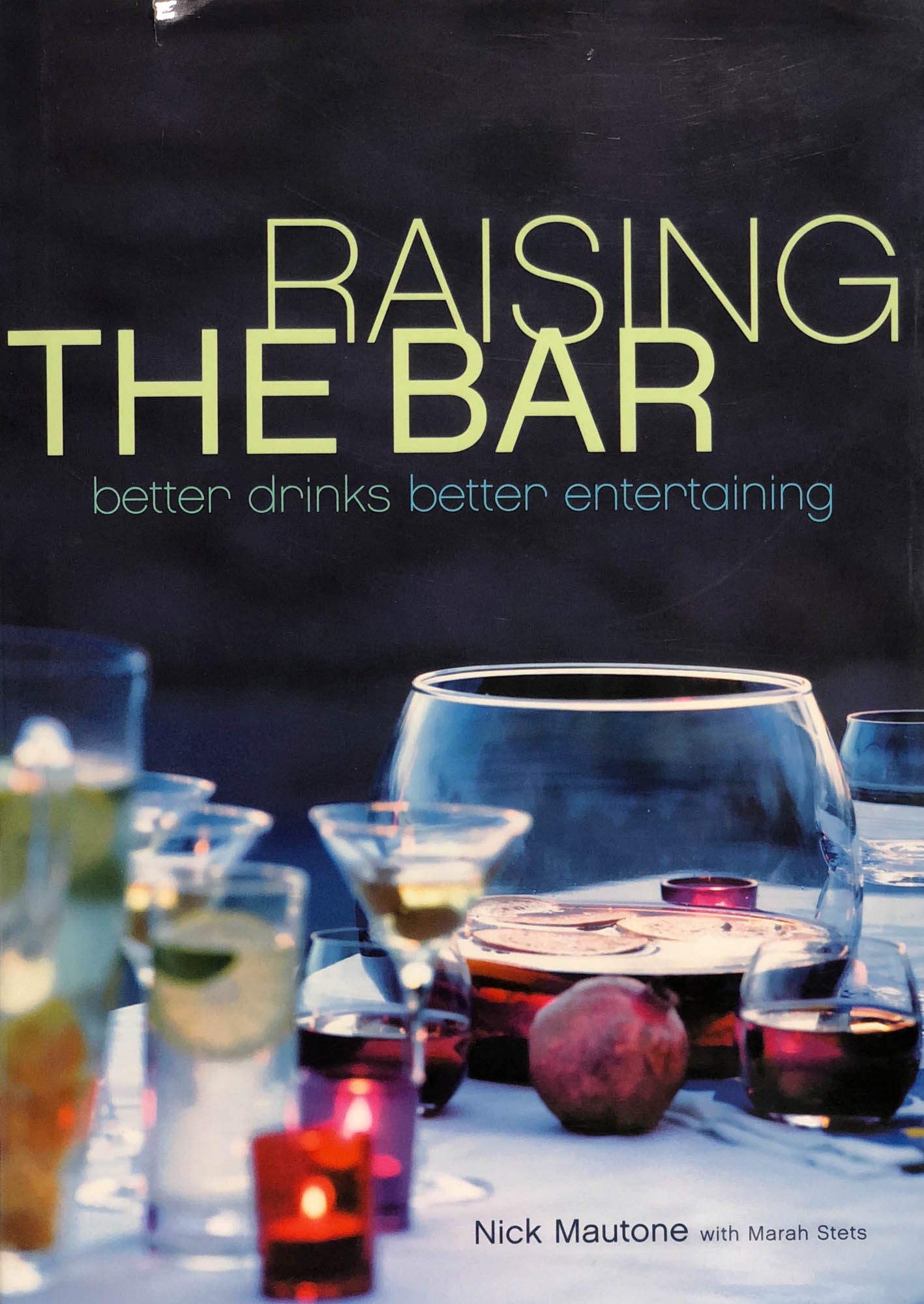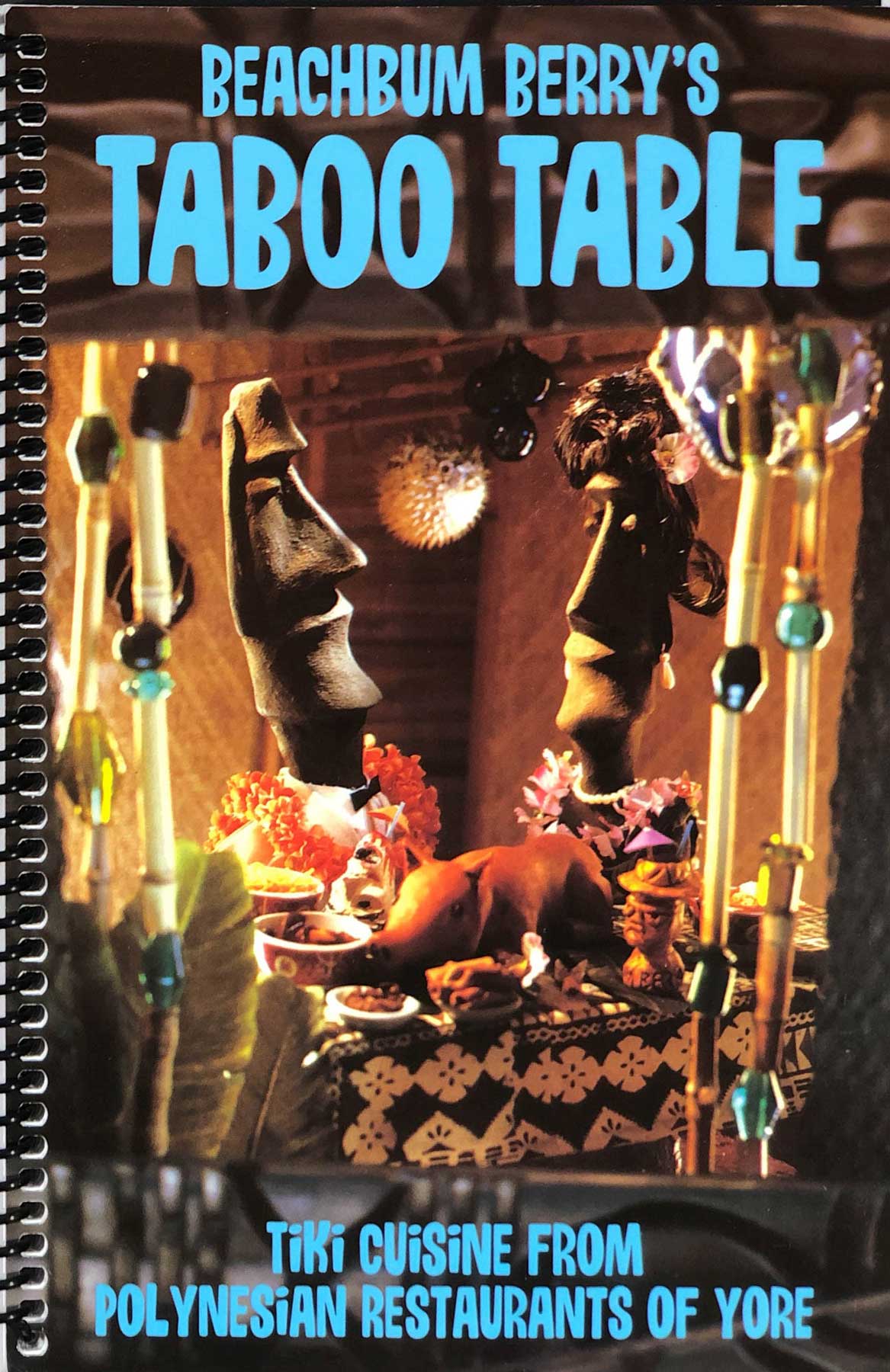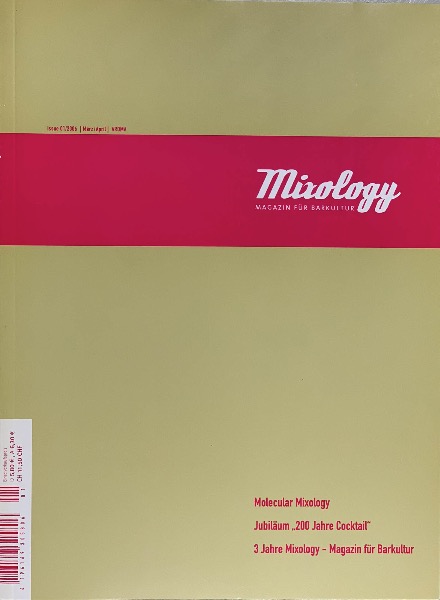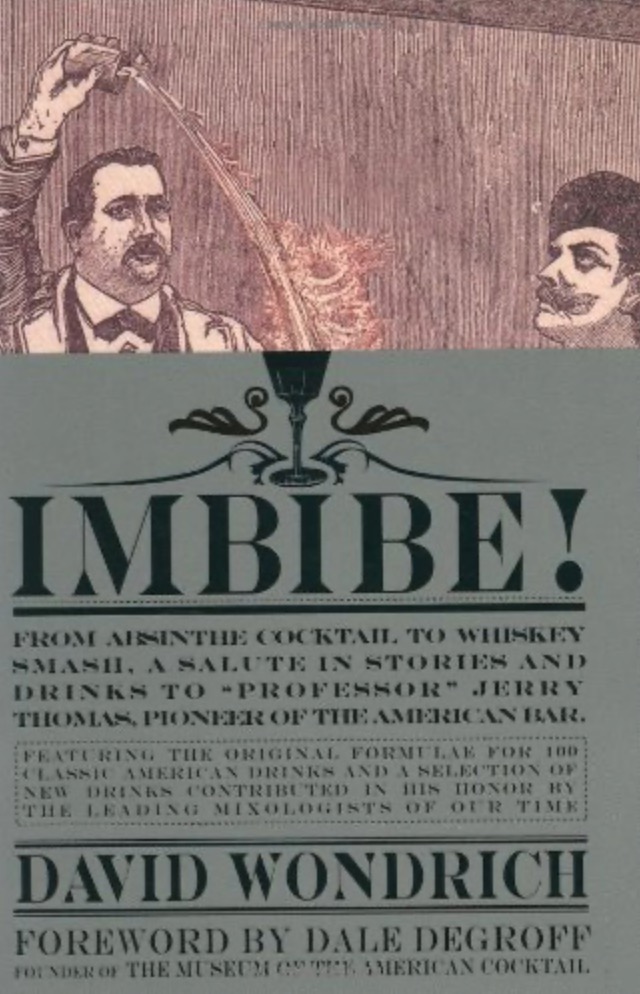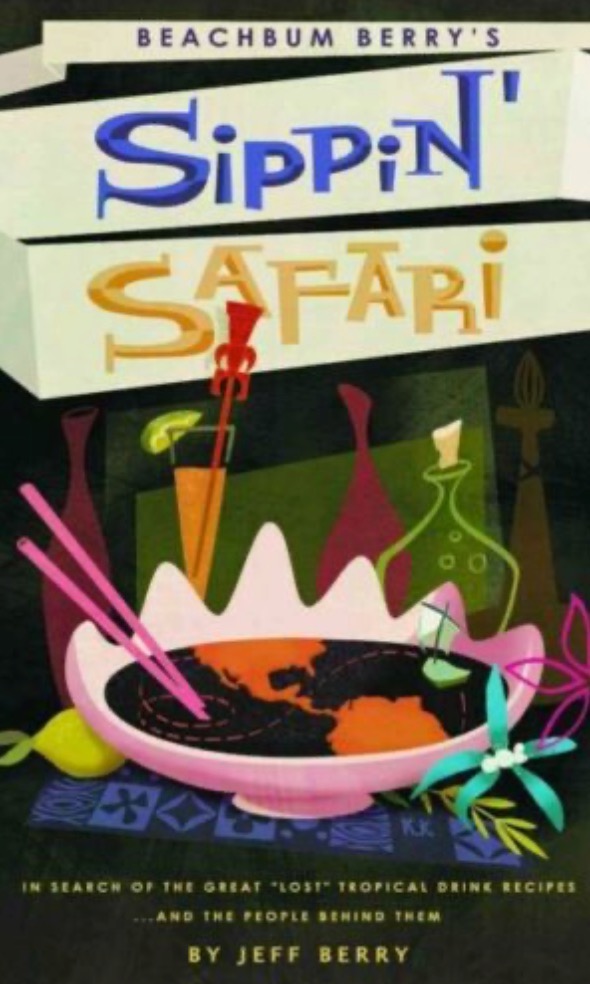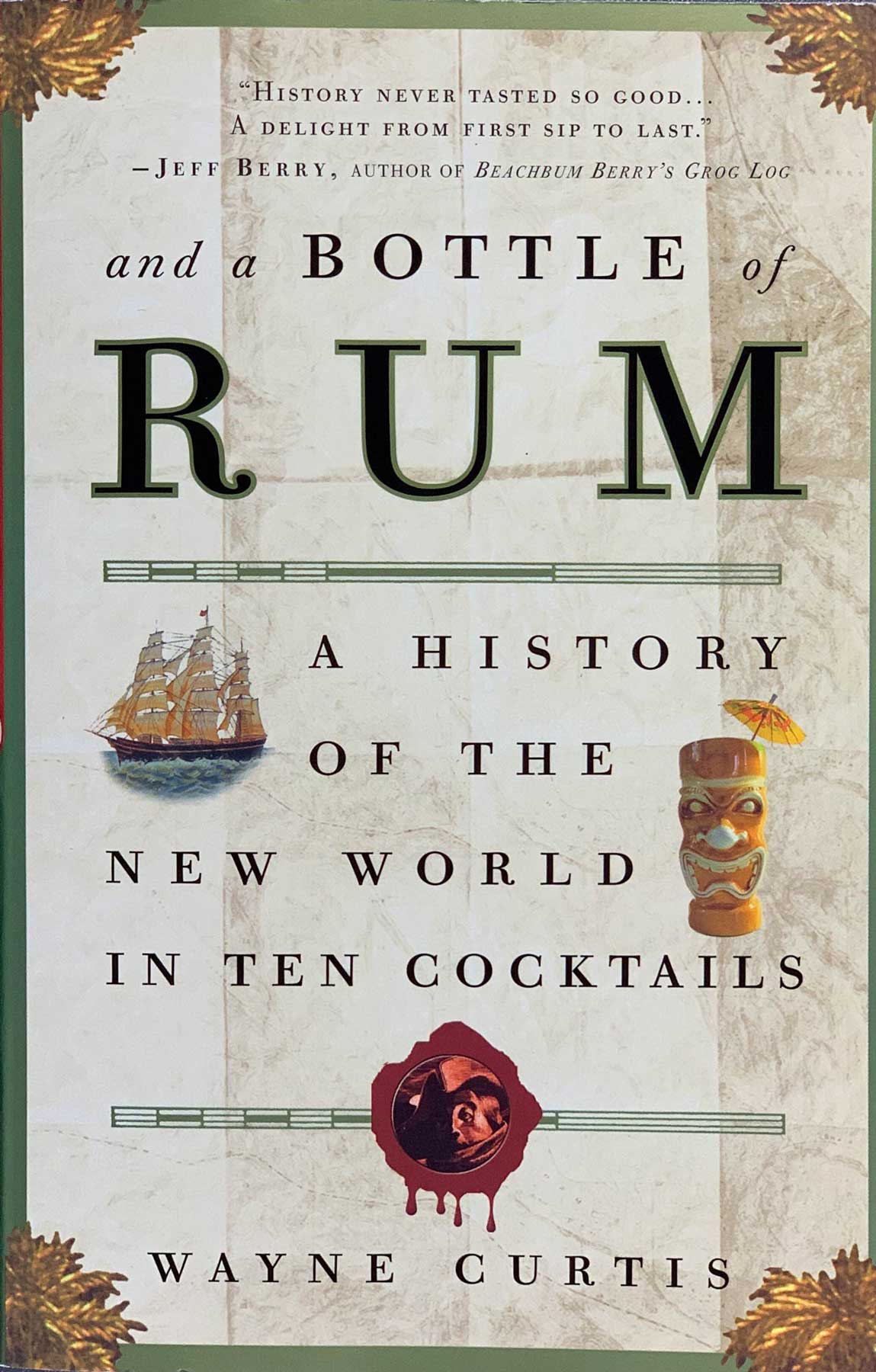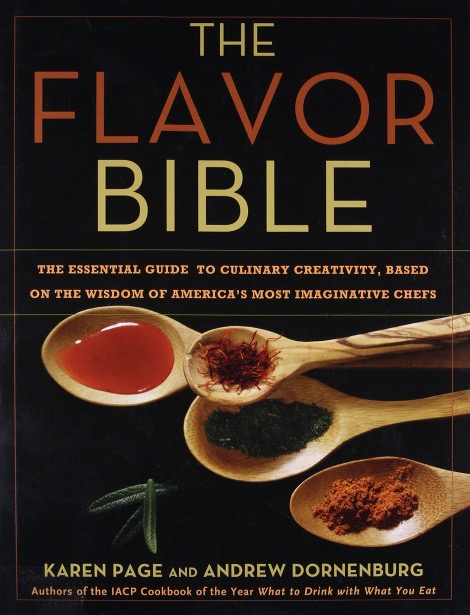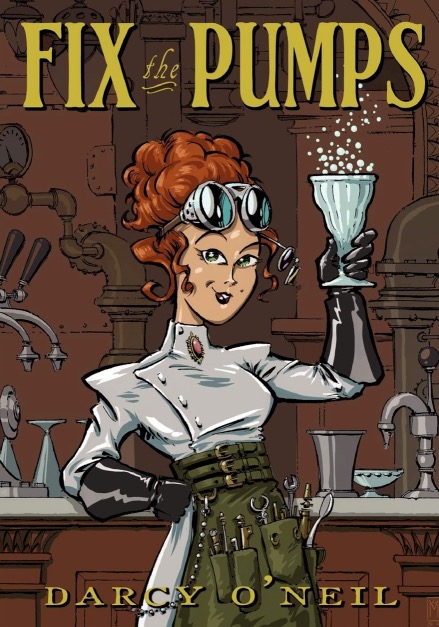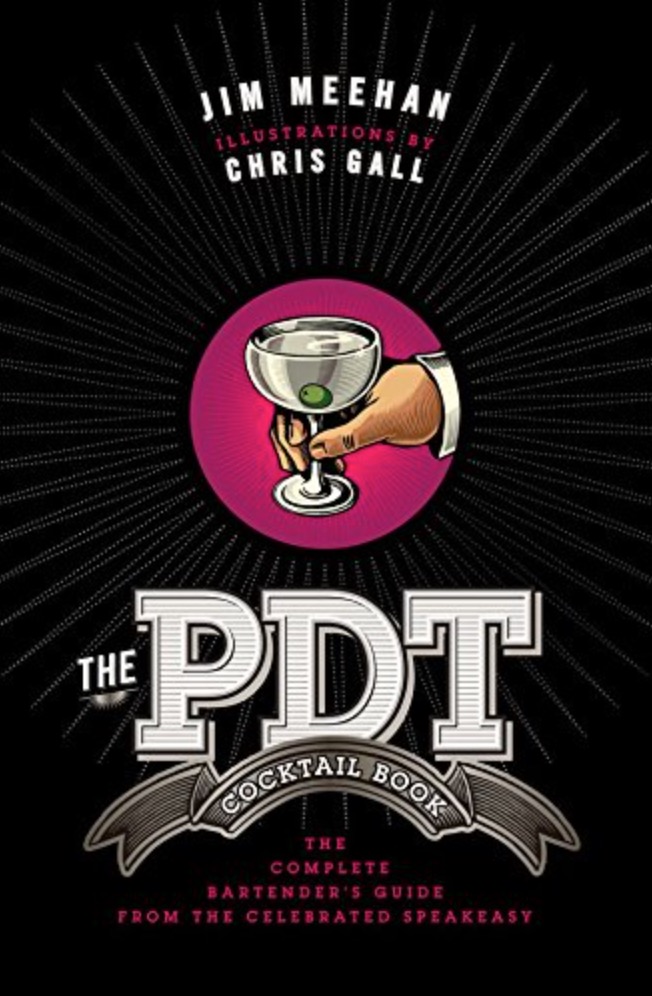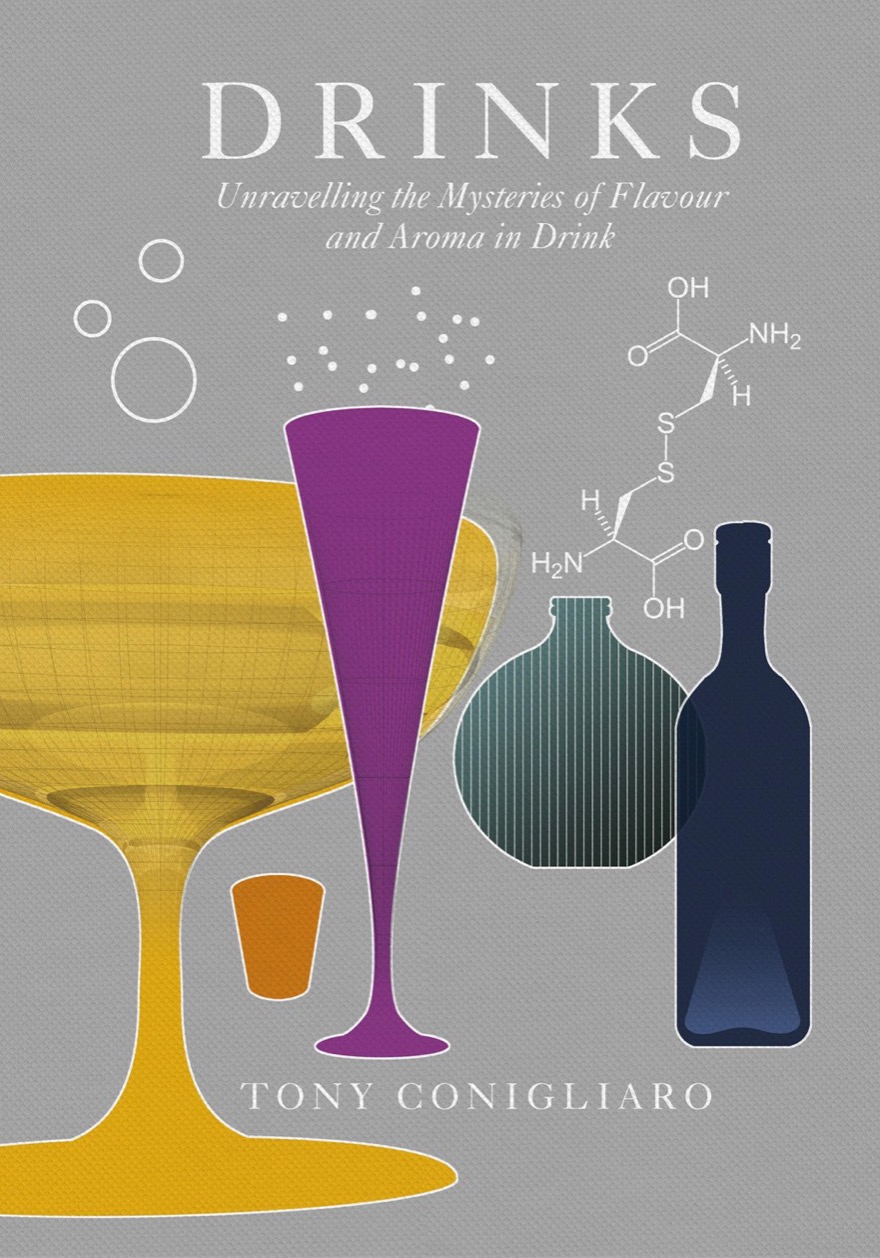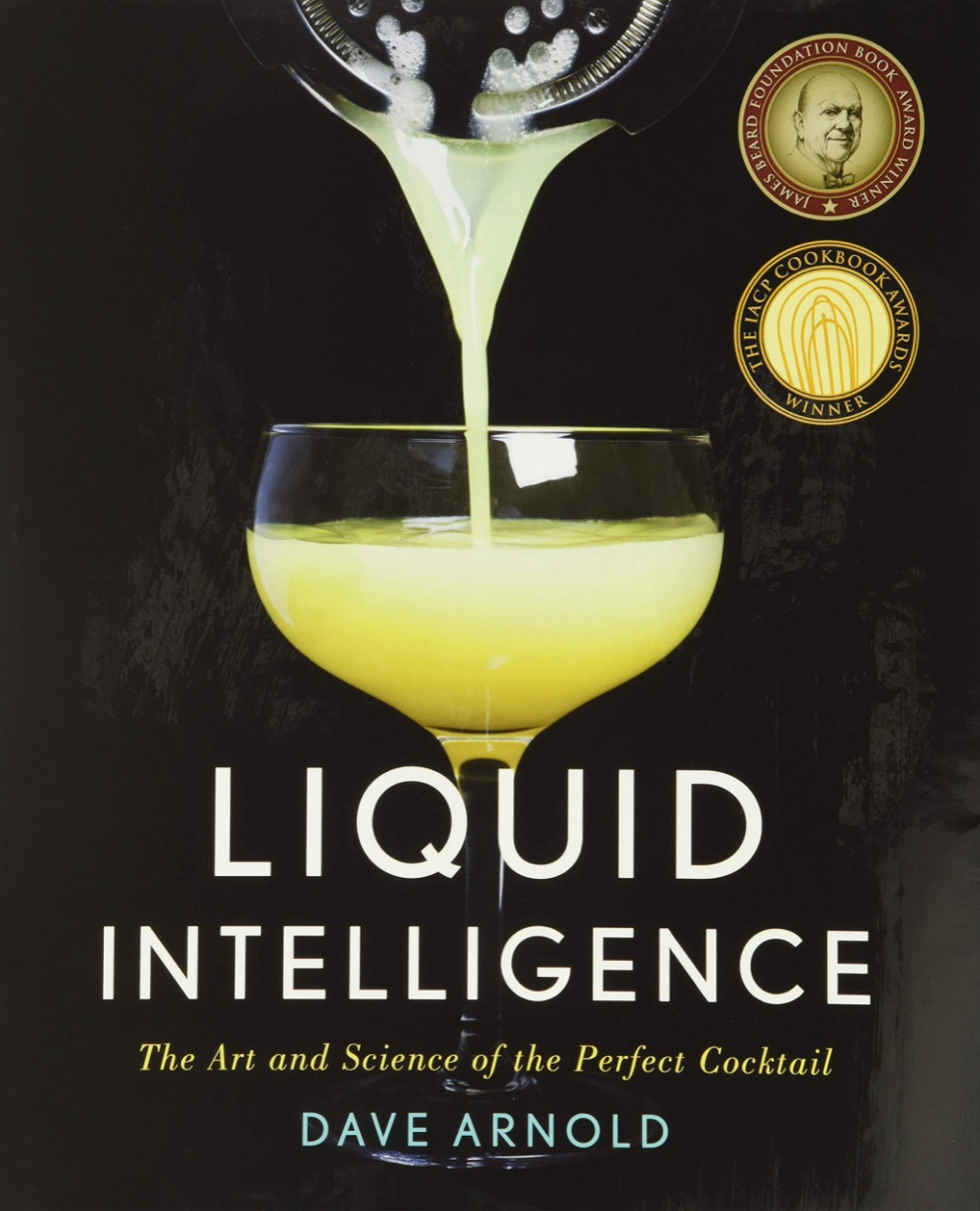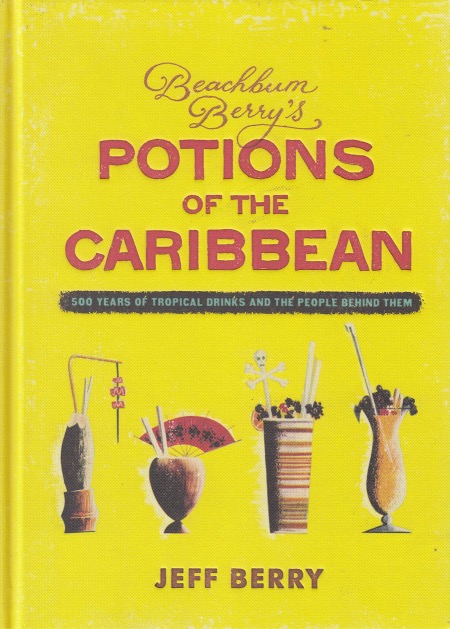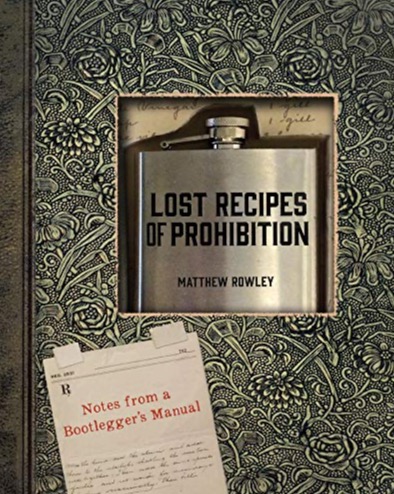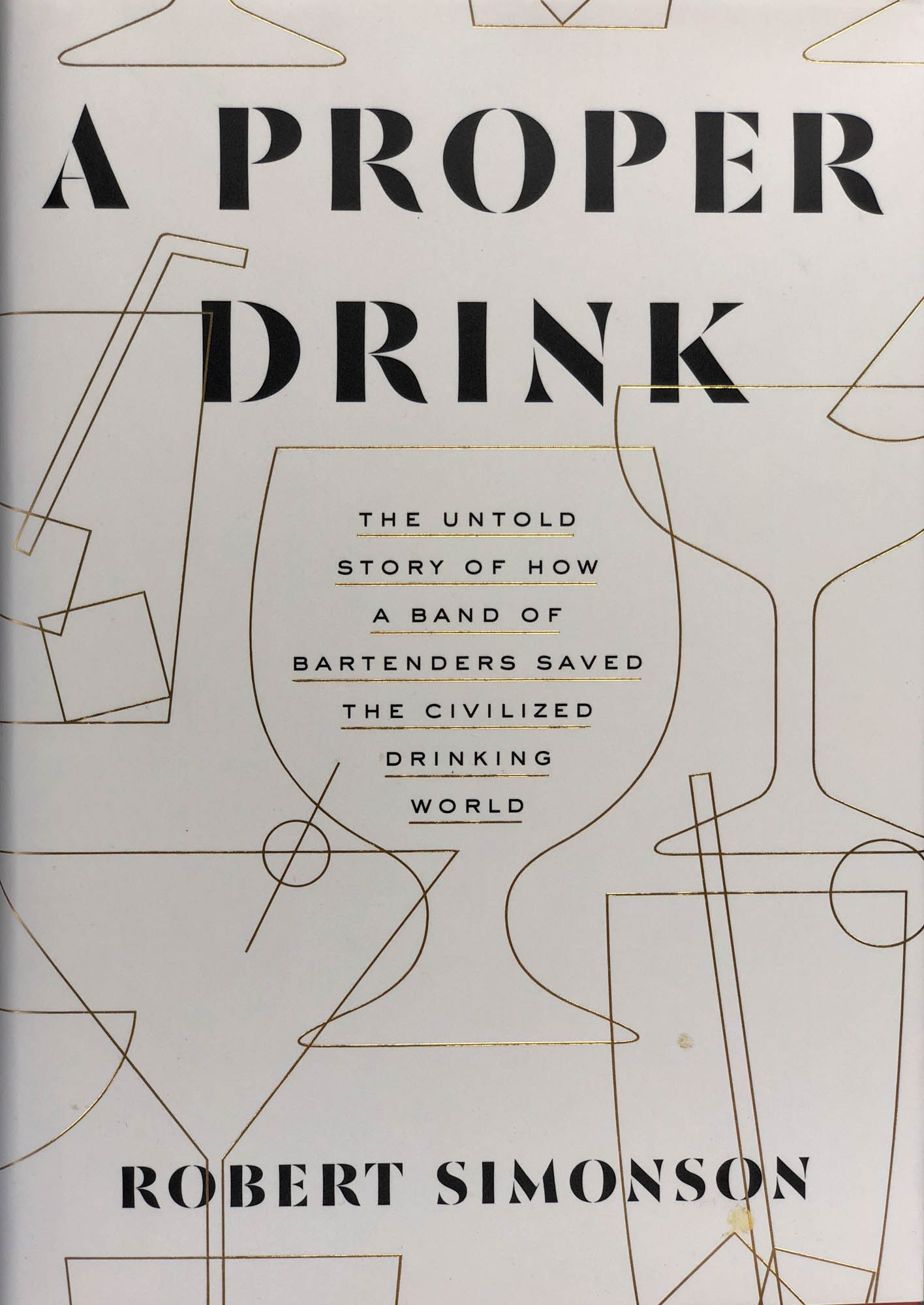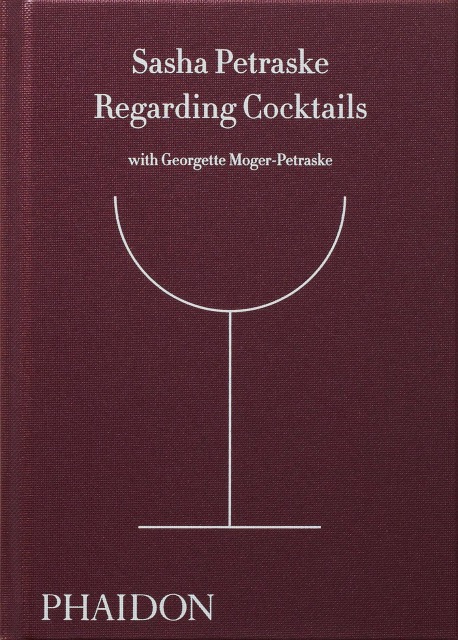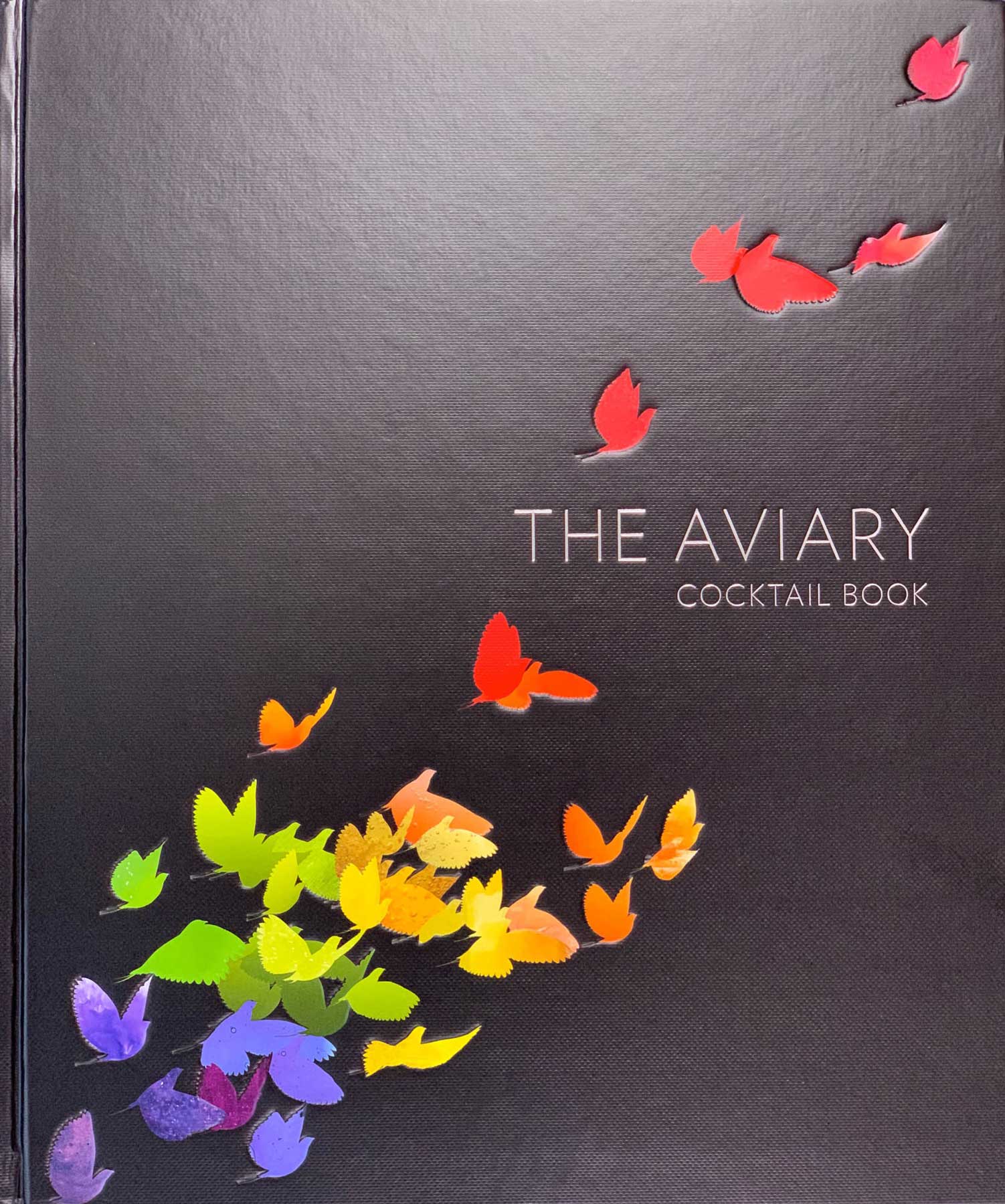An Annotated Bibliography, or “What is the Cocktail Canon?”
The last two hundred years has produced a few thousand books and countless articles on spirits and mixed drinks. Which are the important ones? The answer is at least partly a matter of opinion, dependent on your priorities, and your priorities probably reflect your place in time. For example, those of us who go back to the early days of the Cocktail Renaissance might tend to prioritize the material that aided historical reconstruction, but some of those works might not have been the most popular or valued in 1950 or 1915. Today, relative newcomers to the field might prioritize practical references and sources of creative inspiration. Thus, the idea of a “canon” is a living, shifting window.
This page presents one interpretation of the most significant written works pertaining to (or contextualizing) mixology, along with a hint of the justification for each. As always, some of these choices are more debatable than others. Moreover, a book-centric list like this undervalues—through omission—the periodical articles and Internet resources that have been critical to both historical scholarship and conveyance of the cocktail culture. We will probably adjust and “correct” this bibliography over time, and you’re welcome to join the debate over on the forum.
Randolph, Mary
The Virginia House-wife
Washington DC: Davis and Force
1824
First truly-American cookbook, includes recipes for cordials, syllabub, and various other beverages (no punches), and is a root point reference.
anon.
Oxford Night Caps. Being a Collection of Receipts for Making Various Beverages Used in the University
Oxford, England: Henry Slatter
1827
First publication (a booklet) dedicated to mixed drink recipes; many useful punch recipes documented. Six subsequent editions were issued through 1871 with a smattering of additions.
Leslie, Eliza
Directions for Cookery, in its Various Branches
Philadelphia: E. L. Carey
1837
The top 19th Century American home cookbook, includes compounding instructions for various home remedies, cordials, and punches. Remained in print for 60+ years, with various editions.
Jerry Thomas (author)
How to Mix Drinks, or The Bon-Vivant’s Companion
New York: Dick & Fitzgerald
1862
First collection of American-style mixed drinks to be printed, organized thoughtfully in a manner that stuck, supplied context and first-hand knowledge, formalized the craft, and set stage for the evolution of mixed drinks from that point forward. This was combined in one volume with Christian Schultz’s Manual for the Manufacture of Cordials, &c., to form the Bon-Vivant’s Companion. Additional editions in 1876 and 1882 were expanded by the publishers, probably without Thomas’ input, to include newer fashionable drinks.
Turenne [pseud.]
La Véritable Maniére de Faire le Punch
Paris: La Bibrairie Du Petit Journal
1866
The first actual book wholly devoted to Punch, or indeed to any single category of mixed drink.
Campbell, Charles
Charles Campbell’s American Barkeeper
San Francisco: Mullin, Mahon & Co.
1867
The recipes here often overlap Jerry Thomas’s 1862 ones, but are not plagiarized from that book, plus there are a number of unique ones, along with a couple of pages on bartending, and a supplement on the punches created by Vincenzo Squarza, which were San Francisco favorites. Historian David Wondrich suspects this book is a partial ripoff of what was to be Jerry Thomas’ “Portrait Gallery of Eminent Barkeepers”, reviewed in the press in 1863, but was never released or was otherwise lost.
anon.
Haney’s Steward & Barkeeper’s Manual: A Complete and Practical Guide For Preparing All Kinds of Plain and Fancy Mixed Drinks and Popular Beverages; New and Enlarged
New York: Jesse Haney & Co.
1869
Vital corroborating reference to 1860s drinks; not just a rip-off of Thomas; “New and Expanded Edition” tacks on four pages at the end including the John Collins recipe published in the August, 1873 New York Sun article on mixed drinks (see below).
Terrington, William
Cooling Cups and Dainty Drinks
London: George Routledge & Sons, Ltd.
1869
The English school of mixed drinks, but at the point where the American influence was growing fast.
anon.,
“Fancy American Drinks” (August 22, p. 3)
New York Sun
1873
First substantial popular writing about cocktails; contains much of interest despite rampant garbling of drink names by the journalist. Nonetheless, this is the foundational text of drinks journalism: widely reprinted all around America, it led to articles about bartenders and their drinks becoming a journalistic staple. See also our reconstruction of this article.
Thomas, Jerry
How To Mix Drinks
New York: Dick & Fitzgerald
1876
New edition, possibly executed without Thomas’ involvement, and now published as standalone book; updated with more cocktails, flips, fixes and daisies, showing the growth and evolution of the craft.
Engel, Leo
American & Other Drinks. Upwards of Two Hundred of the Most Approved Recipes, For Making the Principal Beverages Used in the United States and Elsewhere
London: Tinsley Brothers
1878
First book entirely devoted to the American school of mixed drinks published in London. Engel, a German, had worked in Brooklyn and New York, including a stint working for Jerry Thomas.
Johnson, Harry
New and Improved Bartender’s Guide
New York: (self)
1882
First book to discuss setting up a bar program that included cocktails; includes many recipes considered significant; also first German cocktail book, as the author published a version in his native tongue. Johnson updated and expanded his book a couple times, most notably in 1900.
Byron [pseud.], O. H.
The Modern Bartender’s Guide–or–Fancy Drinks and How to Mix Them
New York: Excelsior Publishing House
1884
Anthology of drink recipes ostensibly for the trade—probably the largest to-date. Published by a company that churned out joke books and self-help books. Introduced the Manhattan Cocktail to print, amongst other things.
Paul, Charlie
American and Other Drinks
London: (self)
1884
The first edition of Charlie Paul’s book was published by the author and his employer, the Aquarium, to promote both. The second edition (1887) was significantly expanded by Paul to capitalize on the American Exhibition in London of that year. Both are important documentation of how American drinks were represented in England in the 1880s.
Thomas (post.), Jerry
How To Mix Drinks
New York: Dick & Fitzgerald
1887
Major posthumous re-edit and update further showing the growth and evolution of the craft; includes various new cocktail recipes including vermouth drinks (Manhattan, Martinez).
Proulx, Theodore
The Bartender’s Manual; (Revised Edition)
Chicago: Chapin & Gore Inc.
1888
One of first cocktail-related publications from Chicago, including the earliest (but garbled) Old Fashioned recipe, and intriguing takes on the Cocktail, Martini and Manhattan. Like Kappeler, later, Proulx wrote his recipes in prose, offering the reader more to think about.
Johnson, Harry
New & Improved Bartender’s Manual
New York: (self)
1888
Like the Thomas editions, helps track the evolution and growth of the craft; adds a few notable recipes. Also significantly expands the front section on how to run a bar.
Boothby, William T.
Cocktail Boothby’s American Bartender
San Francisco: San Francisco News Company
1891
Bill Boothby published his first cocktail book in 1891, and updated it in 1900. His was the first and most important San Francisco bar book, somewhat similar to Kappeler in format, a bit like Johnson in that it also contains prescriptive material on bartending, and it presents a large number of corroborating recipes from the West Coast. (For the expansive third (1907) and fourth editions (1930), Boothby changed the title to “The World’s Drinks”—see below.)
Schmidt, William “The Only William”
The Flowing Bowl: When and What to Drink
New York: Charles L. Webster & Co.
1892
The first book to present cocktails as a culinary art, written by the most famous bartender of the time. This lavish monograph presents an unprecedented quantity of original- and quasi-original drinks, with many of drinks named for journalists. This is arguably the first “startender” book, and the first to blur the line between trade literature and popular literature.
Saxe, D. W.
Saxe’s New Guide, or Hints to Soda Dispensers; Third Edition
Chicago: Saxe Guide Publishing Co.
1894
Kappeler [pseud.], George J.
Modern American Drinks: How to Mix and Serve All Kinds of Cups and Drinks
New York: The Merriam Company
1895
Sometimes held up as the third most significant 19th Century book on American drinks after Thomas and Johnson—perhaps underestimating Schmidt—Modern American Drinks focuses on making specific drinks, with carefully written prose. An important corroborating source for the 1890s craft, the book is highly prized by modern mixologists for its clear, well-balanced recipes. “Kappeler” is apparently another pseudonym.
Fouquet, Louis
Bariana
Paris: Au Criterion
1896
More or less the first French cocktail book, written by a bartender at the Criterion, including French takes on familiar recipes and a number of originals.
Applegreen, John
Applegreen’s Bar Book
Chicago: The Hotel Monthly
1899
A very compentent summary of the art as it stood by a top Chicago bartender. First cocktail book presented as a pocket reference.
anon.
The Cocktail Book: A Sideboard Manual for Gentlemen
Boston: L. C. Page & Company
1900
Probably the first full-length cocktail book not aimed at the trade. Published in both Boston and London, with significant new editions in 1902, 1913, and 1925.
Newman, Frank P.
American Bar; Recettes des Boissons Anglaises et Américaines
Paris: Société Française d’Imprimerie et de Librairie
1904
Important early French cocktail book, produced with the Exposition Universelle in mind, presenting hundreds of (mostly) American drink recipes in French. Updated and expanded in 1907, adding one of the first Dry Martini recipes.
Mahoney, Charles
The New Bartender’s Guide; Revised and Enlarged
New York: Richard K. Fox
1904
Seminal trade bar guide written by the head bartender of the third major incarnation of the Hoffman House. Notable for extensive instructional text about operating a cocktail bar (an alternate take to Harry Johnson’s), and for being the first cocktail book with photographs, and for documenting the state of the art at one of New York City’s most important and popular bars. Updated several times.
Muckensturm, Louis
Louis’ Mixed Drinks with Hints for the Care & Serving of Wines
Boston: H. M. Caldwell Co.
1906
Unusual drinks book from a Boston restauranteur with the distinction of introducing the Dry Martini (by name) to print in the United States.
Herrick, Christine Terhune; Harland, Marion
Consolidated Library of Modern Cooking and Household Recipes Vol. V
New York: R. J. Bodmer Company
1907
Arguably first book of mixology published by a woman (two, in this case). Extensive collection of single serving drinks and punches, all with an eye toward domestic hospitality (collection of toasts included).
Boothby, Bill
World’s Drinks
San Francisco: (self)
1908
Third and fourth editions of first and most important San Francisco bar book, somewhat similar to Kappeler in format, like Johnson also contains a lot of material on bartending, presents a large number of corroborating recipes from the West Coast.
Grohusko, Jack
Jack’s Manual
New York: (self)
1908 and later
First cocktail book by a Jewish bartender, in this case an important downtown New York City figure. Grohusko’s book is an important corroborating document of the era, it introduced the Brooklyn Cocktail—probably a Grohusko original—and various others. Unfortunately, the recipes are infamously troublesome for employing percentages, turning every drink into a math problem.
Gasparo, Jorge
Guia Practica del Cantinero
Monterrey, Mexico: Cervecería Cuauhtemoc
1909
Perhaps the first Mexican cocktail guide. Begins with a few dozen pages that outline setting up an operating a cocktail program in Mexico. Includes a selection of largely familiar drink recipes, but also a Tequila Cocktail recipe (tequila, curaçao and bitters). [book cover image from EUVS]
Leybold, John; Schönfeld, Hans
Lexikon der Getränk; [first edition]
Köln: (self)
1913
The foundational text for the German school of mixology, or would be if not for being buried by WWI. Includes a vast number of drink recipes including more then two hundred recipes for the signature shots of the regiments of the Imperial German army.
Straub, Jacques
Drinks
Chicago: Marie L. Straub/The Hotel Monthly Press
1914
First edition (“Manual of Mixed Drinks”) is 1913, but the reformatted pocket-size 1914 edition (trade reference) sets a new bar for terse density, helps introduce various important drinks. With 292 cocktail recipes, Drinks illustrates how much mixology has expanded in forty years.
Escalante, John B.
Manual del Cantinero
Havana: Imprenta Moderna
1915
Extremely early Cuban cocktail book interesting as snapshot of in-process importation of American mixed drinks to Cuba; introduces El Presidente. [book cover image from EUVS]
Ensslin, Hugo R.
Recipes for Mixed Drinks
New York: (self)
1916
The Second Edition (1917) is generally considered the last major cocktail book in the US prior to Prohibition; the pair include a slew of important and interesting recipes from the teens, some indeterminate number invented by Ensslin, himself.
Bullock, Tom
The Ideal Bartender
St. Louis, Missouri: Buxton & Skinner
1917
First cocktail book by an African American bartender; quite a few interesting drinks and familiar ones that help corroborate from the center of the country.
Anderson, Julian
Julian’s Recipes
Helena, Montana: (self)
1919
The second cocktail book published by an African-American bartender (at a social club in Helena, Montana). [book cover image from EUVS]
Ferruccio, Mazzon
Guida del Barman Mixer
Trieste: Stablimento Tipografico Nazionale
1920
First Italian bar book. Mainly focused on translating the American-style bar for Italian purposes, but includes some interesting twists and a surprising selection of frozen desserts.
McElhone, Harry
“Harry” of Ciro’s A B C of Mixing Cocktails; First Edition
London: Christopher & Co., Ltd.
1922
An enormously influential look at the bartender’s art as it was understood in London and, later, in France in the years right after the Great War. A number of the drinks receive attributions, including the Sidecar. Updated sporadically in at least twelve editions between 1922 and 1950, adding new drinks and maybe trimming some felt less interesting. The first edition was actually the only one that mentioned Ciro’s in the title, as McElhone moved to Paris and took over Harry’s New York Bar. A special edition of his book, entitled “Barflies & Cocktails”, was created in 1927 specifically for his Paris bar, with an appendix of prose about individual patrons of Harry’s Bar and their favorite drinks.
Vermeire, Robert
Cocktails: How to Mix Them
London: Herbert Jenkins
1922
Perhaps the most successful cocktail book (by sales) ever, particularly in Europe. A well-edited snapshot of the time that helps introduce a number of new European drinks, including the Sidecar.
Toye, Nina; Adair, A. H.
Drinks—Long & Short
London: William Heinemann Ltd
1925
A book from London, dedicated to cocktails to serve at home, that enjoyed great success in Europe, including multiple translated editions. Also notable for being co-written by a woman, and for being—arguably—the first “foodie” drinks book, anticipating later media the likes of Gourmet magazine.
al, Marcel Requien et
l’Heure du Cocktail
Paris: Sociéte Mutuelle d’Édicions
1927
A robust work that captures popular mixology in France in the 1920s
Chicote, Pedro
El Bar Americano En España
Madrid: Sucesores de Rivadeneyra S. A.
1927
The first of several books from Spain’s most important bartender of the 20th Century, and a reference point for the state-of-the-art in Madrid in 1927.
Machamer, Jefferson “Judge Jr”
Here’s How
New York: The John Day Company
1927
Distinctive Prohibition-era curiosity packed with many undrinkable recipes, but presented in charming letterpress and humor. Written by a cartoonist for Judge magazine. Primarily referenced for the first French 75 recipe. Three additional editions published between 1927 and 1930.
McElhone, Harry
Barflies & Cocktails
Paris: Lecram Press
1927
The seventh edition of McElhone’s ABC (see above), with illustrations and a large supplement devoted to colorful customers of Harry’s New York Bar (Paris), and their favorite drinks.
“Rip”,
Cocktails de Paris
Paris: Editions Demangel
1929
Captures popular mixology in France in the late 1920s.
Craddock, Harry; Rumbold (illustrations), Gilbert
The Savoy Cocktail Book
New York: Richard R. Smith, Inc.
1930
A visually magnificent, hugely popular, and influential book from the head bartender at the Savoy. The book anthologizes hundreds of drink recipes, (unfortunately) heavily plagiarized, and containing some misinformation. An expanded edition arrived in 1933 with new cover art and additional pages of recipes appended at the back. Later editions of 1952 and 1965 exist with a simplified design and murky provenance.
Corrales (editor), Gerardo
Manual Oficial
Havana: Club de Cantineros de la Republica de Cuba
1930
The culmination of Cuban mixology as of 1930 in a standard trade reference. Essential reference.
“Jimmy”,
Cocktails by “Jimmy” late of Ciro’s
Philadelphia: Dave McKay Company
1930
Somewhat mysterious American book from a bartender who had ostensibly been working in London, and possibly elsewhere in Europe, that tersely captures a cross-section of late-1930s mixology.
Crockett, Albert Stevens; Budd (illustrations), Leighton
Old Waldorf Bar Days
New York: Aventine Press
1931
Old Waldorf Bar Days is journalist Albert Stevens Crockett’s tribute to the bar at the original Waldorf–Astoria on 5th Avenue at 34th St, the one under his friend and maître d’hôtel, the inimitable Oscar Tschirky, that was closed by Prohibition in 1922 and demolished in 1929. The first half of the book is a narrative of memorable anecdotes, the latter an extensive collection of drink recipes. Crockett would revisit this topic three years later in the more recipe-intensive “Old Waldorf–Astoria Bar Book”.
Ribalaigua, Constante
Bar La Florida Cocktails
Havana: (self)
1933
A souvenier pamphlet of the recipes of Constante Ribalaigua—arguably the king of 20th-century bartenders—proprietor of La Florida in Havana (later popularly known as La Floridita). Hugely influential original drinks and impeccably-balanced versions of the classics. One of the Ur-sources of the Tiki movement. Multiple editions.
Duffy, Patrick Gavin
The Official Mixer’s Manual
New York: Ray Long & Richard R. Smith, Inc.
1934
The most influential and concerted effort by an American publisher in the years after Repeal to comprehensively restore both the pre-Prohibition recipe book of the American bar and update it with everything significant developed (mostly abroad) in the years since; thoughtfully organized by base (first printings featured a thumb index).
Neirath, Oscar
Rund um die bar
Dresden: Genfer Verband der Hotel und Gast
1934
One of the first attempts at a comprehensive history of the American school of drinking, plus an exhaustive treatment of the tools, techniques and standard categories of mixed drink; illustrated with photographs. [book cover image from EUVS]
de Fleury, R.
1700 Cocktails for the Man behind the Bar
Surrey, England: Windmill Press
1934
Probably the largest number of drink recipes published in one volume by that time, showing how vast (and often redundant) the repertoire had grown in roughly fifty years. Does contain at least a hundred novel recipes of at least passing interest, if utterly vague provenance.
Cotton, Leo
Old Mr. Boston Deluxe Official Bartender’s Guide
Boston: Ben Burk, Inc.
1935 [including near-countless editions beginning with pamphlets in 1932 up to the books of the present day]
The first hardcover edition of the extremely successful Old Mr. Boston series emerged in 1935, vastly more ambitious than the couple pamphlets that preceded it. The book was subsequently reprinted, often with small tweaks, nearly annually, to the present day, with major editions in 1940, 1950, and 1960. Distributed on a vast scale, the Old Mr. Boston guides probably did more than any other book to track and reinforce the mainstream of American cocktails.
Meier, Frank
The Artistry of Mixing Drinks
Paris: (self)
1936
An unusually lavish cocktail book capturing the mixed drink recipes of a top French hotel bar at its peak, including the author’s original creations, such as the Bee’s Knees.
Grassi, Elvezio
1000 misture
Milan: Licinio Cappelli
1936
A book so unique as to be almost surreal. A little bit of history, which is uncorroboratable, followed by a vast number of recipes, most of them unique and completely idiosyncratic. 22 vodka drinks, 35 Batavia arrack drinks, all kinds of oddities. [book cover image from EUVS]
Tarling, W. J.; Carter (illustrations), Frederick
Café Royal Cocktail Book; Coronation Edition
London: Pall Mall Ltd
1937
A major—indeed sprawling—anthology of recipes from a top London bar, by it’s head bartender, and one of the UKBG’s leaders. Contains many recipes of interest for novelty or corroboration, and is an interesting individualistic contrast with the UKBG’s contemporaneous “Approved Cocktails” (see below).
Arthur, Stanley Clisby
Famous New Orleans Drinks…
New Orleans: Harmanson
1937
First book to really concern itself with the history of particular drinks; alas, most of the histories are unreliable, if not outright fabrications, although there are plenty of nuggets of verifiable fact to be found.
Marco & Gale
The How and When
Chicago: (self)
1937
Lavish hardcover books containing wine and spirits guidance and hefty recipe collections, published by Chicago liquor store chain for their customers. Unusually well done. Updated in 1940, 1945 and 1949. The 1940 edition is notable for including a section on tropical drinks, most drawn from Ron Rico marketing materials, but still a first.
Craddock, Harry
Approved Cocktails
London: Pall Mall Ltd
1937 [followed by various subsequent UKBG Guide to Drinks books]
Formal collection of recipes edited by Harry Craddock, first president of the UKBG, compiling the state of the art of mixology in England. This book was eventually followed by various editions of “The UKBG International Guide to Drinks”, as the organization developed chapters around the world.
Baker, Jr., Charles H.
The Gentleman’s Companion; Volume I & II
New York: Derrydale Press, Inc.
1939
Amongst the most famous and distinctive popular works on mixed drinks; marries the “adventure writer” style of such as Richard Halliburton to foodie writing; distinctly amateur and dilettante but also very influential.
Gaige, Crosby
Cocktail Guide & Ladies’ Companion
New York: The Ganger Co.
1941
Mostly of use for the section at the beginning where top bars in New York contribute drinks and write about them; one of the early reference points for the Bloody Mary.
Williams, H. i.
3 Bottle Bar
New York: M. S. Mill Co., Inc.
1943
Popular work aimed at home use novelly explores mixological minimalism, identifying patterns in drink formulae and perfectly anticipating post war asceticism.
Beebe, Lucius
Stork Club Bar Book
New York: Rinehart & Company, Inc.
1946
A widely popular book from the premiere bar in America at the time, including a number of original drinks.
Bergeron, Victor
Trader Vic’s Book of Food & Drink
Garden City, New York: Doubleday & Company
1946
By the mid-40s, polynesian pop was a fashion, and Trader Vic was now famous and expanding his merchandise business, so he did the logical thing and wrote a book for Doubleday. The result was, for quite a while, about the closest anyone would have to a public recipe book for the “tropical” food and drink of exotic restaurants (Trader Vic’s was particularly known for having above average food). Includes a primer on rums from around the world, a tidy selection of drink recipes including some Vic drinks such as the Scorpion and Fog Cutter, and home luau instructions.
Bergeron, Victor
Bartender’s Guide by Trader Vic
Garden City, New York: Doubleday & Company
1947
Bergeron’s second book came right on the heels of his first, and it’s a more straight-up bar guide, with hundreds of drink recipes, and little content related to Vic’s exotic restaurant business. Still, it’s a well done and surprisingly exhaustive reference to mid-40s mixology, prefaced by amusing essays such as “People that bartenders have learned not to like”.
Alonso Sanchez, Hilario
El Arte del Cantinero; Los Vinos Y Los Licores
Havana, Cuba: P. Fernandez y Cia., S. en C.
1948
Rather than another slim recipe reference, this nearly 500-page tome collects a mass of information on myriad topics (wine types and history, distillation, Cuban rum, cordials, beer, alcoholism, origin stories of mixed drinks, conduct and ethics, glassware, bar food, etc.) that a reputable Cuban bartender might be expected to know, placing this work in-line with Harry Johnson’s and Charles Mahoney’s books. (A substantial collection of recipes is also included.)
Embury, David A.
The Fine Art of Mixing Drinks
Garden City, New York: Doubleday & Company
1948
Setting aside exercises in basic categorization that began with Jerry Thomas, this is the first theoretical book on cocktails; amateur and quixotic in the proportions it uses for its drinks, it is nonetheless indispensable.
DeVoto, Bernard
The Hour
Boston: Houghton Mifflin Company
1949
Sanfeliú Brucart, Jacinto
El Bar, Evolución Y Arte Del Cocktail
Madrid: (self)
1949
Stylish and significant corroborating source for mid-century Spanish mixology.
Saucier, Ted
Bottoms Up
New York: Greystone Press
1951
Arguably the last major American work of the first era of the cocktail; lavish, but also well edited, and documented lots of new drinks.
McBride, Jack Townsend & Tom Moore
The Bartender’s Book
New York: The Viking Press
1951
An attempt to cut through the bullshit and present a restricted canon of drinks related to what people were actually drinking in American bars, often with acerbic comments. Townsend was the president of the New York bartender’s Union, and would have gotten along well with Jeffery Morgenthaler.
Baker, Jr., Charles H.
The South American Gentleman’s Companion; Volume I & II
New York: Crown Publishers
1951
Second helping of Charles Baker in the exact same manner as the first; does contain glimpses of mid-Century mixed drink scenes in Latin America.
Policastro, Santiago (Pichin)
Tragos Magicos
Buenos Aires: Ediciones Riverside
1955
Unique, lavishly-illustrated and -designed, mid-Century drink book from Argentina’s star bartender. Contains thirty-some pages of introductory front matter on cocktail culture followed by a huge number of recipes unfamiliar to Americans and Europeans, many of which were probably created by Policastro himself.
Blochman, Lawrence
Here’s How! A Round the World Bar Guide
New York: Signet Key Books
1957
Compiled by the Overseas Press Club, who really had been everywhere and drank with the locals.
Saucier, Ted
Bottom’s Up: New and Revised Edition
New York: Greystone Press
1962
Significant editorial update to the first edition mainly to add many new drinks; documents both the rise of vodka cocktails and the emergence of the debased mixology to come.
Mario, Thomas
Playboy’s Host & Party Book
Chicago: Playboy
1971
One of the only ambitious, carefully assembled references of this time period
Amis, Kingsley
On Drink
London: Jonathan Cape
1972
Costa, Roberto
Traçado geral das batidas
Rio de Janeiro: Civilização Brasileira
1974
Apparently the first Brazilian drinks book.
Jones, Stan
Jones’ Complete Barguide
Los Angeles, California: BarGuide Enterprises
1977
Nearly the only significant American cocktail book published in the 1970s and probably the largest collection of mixed drink recipes published up to that point. Contains thousands of terse, but neatly presented formulas intended to encapsulate the entire genre. Published during the nadir of public interest.
Edmunds, Lowell
The Silver Bullet
Westport, Connecticut: Greenwood Press
1981
Remarkable scholarly essay on the Martini Cocktail, mainly from a cultural perspective.
Schumann, Charles; Mattei (illustrations), Günter
Schumann's Tropical Barbuch
Munich: Collection Rolf Heyne
1986
An early and earnest independent attempt at reviving interest in exotic drinks within the German sphere. Somewhat representative of the leading edge of cocktail culture in Germany in the mid-eighties.
Shea, Vincent Sardi Jr. and George
Sardi’s Bar Guide
New York: Ballantine Books
1988
A thorough, sometimes mordant, look at the art of drink as it stood at the end of the Dark Ages.
Boadas, María Dolores
Los cócteles del Boadas Cocktail Bar
Barcelona: Muchnik Editores
1990
A monument to Barcelona’s great cocktail bar.
Schumann, Charles
Schumann’s Bar
Munich: Collection Rolf Heyne
1991
The foundational text of the (largely independent) rebirth of cocktail culture in Germany.
Berry, Jeff; Kaye, Annene
Grog Log
New York: Black Dog & Leventhal Publishers
1994
The origin point of exotic drink archaeology including over fifty recipes, mostly period. Later anthologized within Beachbum Berry Remixed.
Regan, Gary; Regan, Mardee Haidin
New Classic Cocktails
New York: Macmillan Company
1997
One of the first “coffee table book”-style drink books, where photography played an outsized role in the content—the perfect template for the style of drinks book we are now awash in, but far ahead of its time. Remarkable for positing the optimistic (ultimately prescient) notion that there were novel drinks in 1997 to get excited about. Also, where Adam Seger’s infamous Seelbach Cocktail was first presented.
Harrington, Paul; Moorhead, Laura
Cocktail: The Drinks Bible for the 21st Century
New York: Viking
1998
Essentially the first new cocktail book of the nascent Cocktail Renaissance, and fittingly, derived and expanded from a web site: “Cocktail Time”, which bartender Paul Harrington authored for Wired Magazine’s trailblazing Hotwired on-line publishing project. Pairs a curated selection of classic and original drinks with historical blurbs and original artwork, and even dabbles in infographics.
Grimes, William
Straight Up or On the Rocks
New York: North Point Press
2001
Concise, well-researched popular history of mixed drinks as American culture; the first accurate book of its kind and the foundation for subsequent works on the topic, such as David Wondrich’s “Imbibe”. Lightly revised second edition in 2002.
Berry, Jeff
Intoxica
San Jose: SLG Publishing
2002
Second helping of exotic drink archaeology, mostly period. Later anthologized within Beachbum Berry Remixed.
DeGroff, Dale
The Craft of the Cocktail
New York: Clarkson Potter
2002
A foundational text of the rebirth of cocktail culture in the United States, basically supplanting Harrington; builds a bridge (that happens to crest through the Rainbow Room) from the first cocktail era to the new emerging one, presenting much of what DeGroff figured out when he was largely on his own.
Cecchini, Toby
Cosmopolitan
New York: Broadway Books
2003
First bartender memoir of the Cocktail Renaissance (although most of the story pre-dates it).
Regan, Gary
Joy of Mixology
New York: Clarkson Potter
2003
A foundational text of the Cocktail Renaissance. Probably the leading popular reference for cocktails in the first decade of the rebirth, offering a more didactic format from DeGroff’s “Craft” and perhaps stronger ties to the mainstream mixology—such as it was—of the 1970s and 1980s. Joy of Mixology is also significant as perhaps the second theoretical work on cocktails, after Embury’s “The Fine Art of Mixing Drinks” (1948).
Castellon, Fernando
Le Larousse de Cocktails
Paris: Larousse
2004
Early milestone for contemporary cocktails in France, offering an encyclopedic reference work well before anything comparable was available in English or elsewhere, while predating much actual local cocktail revival by about three years.
Haigh, Ted
Vintage Spirits & Forgotten Cocktails: From the Alamagoozlum Cocktail to the Zombie
Gloucester, Massachusetts: Quarry Books
2004
Broadly influential guide to less obvious classic recipes, particularly ones with ingredients that were obscure in the 2000s. Successfuly inspired countless bartenders and enthusiasts to broaden their reach and ultimately demand the reintroduction and restoration of “lost” ingredients, most of which were once again available a mere five years later. The first edition was supplanted by a significantly expanded and improved 2009 edition.
Mautone, Nick
Raising the Bar
New York: Artisan
2004
One of first—certainly most fully realized—contemporary drinks book (post-1990s) defining a distinct culinarily-focused style of mixology, mainly for home use; also a template for the photography-laden style of cocktail book publishing that begins in this era
Berry, Jeff
Taboo Table
San Jose: SLG Publishing
2005
Third helping of exotic drink archaeology from Beachbum Berry, this time including a collection of snacks and dishes of the sort served at mid-Century exotic restaurants.
var.
Mixology Magazin
Berlin
2006 and onwards
One of the first and most resiliant trade magazines specific to the Cocktail Renaissance, published in Berlin and carefully focused on Germany, Austria and Switzerland. Mixology produced original content and helped to symbiotically develop the local spirits industry and cocktail bar scene. Additional content, particularly in the early years, was solicited from figures such as Anistatia Miller, Jared Brown, and Gary Regan and translated to German. Mixology magazin also threw off two significant annual industry events: BarConvent Berlin and the Mixology Bar Awards.
Wondrich, David
Imbibe! From Absinthe Cocktail to Whiskey Smash, a Salute in Stories and Drinks to “Professor” Jerry Thomas, Pioneer of the American Bar
New York: Perigree
2007 [and 2015 updated edition]
Arguably the most important book ever published about American-style mixed drinks. Imbibe! applied diligent scholarship to decode much of the history of 19th Century cocktail culture, puncturing many myths along the way, and restoring interest in “old fashioned” drinks and the techniques that produced them. The first edition was supplanted by a heavily rewritten and updated second edition in 2015 that reflects further research advances.
Berry, Jeff
Sippin’ Safari
San Jose: SLG Publishing
2007
The most important book ever written about exotic drinks, both for its historical content, detective work, and the sheer volume of authoritative drink recipes that were previously unavailable. The first edition was supplanted in 2017 with an extended edition.
Curtis, Wayne
And A Bottle Of Rum…
New York: Three Rivers Press
2007
Concise, well-researched popular history of the most sprawling and opaque spirit category; significantly revised in 2018.
Dornenburg, Andrew; Page, Karen
The Flavor Bible
New York: Little, Brown and Company
2008
While not a drinks book at all, this unique, sprawling reference to flavor affinities was greatly influential as contemporary mixology grew more expansively adventurous and culinarily-focused. Found amongst the recipe books on many a back bar.
Uyeda, Kazuo
Cocktail Techniques
New York: Mud Puddle
2010
First book detailing the modern Japanese cocktail aesthetic, values and technique—albeit from one point of view—to be translated to English and republished outside Japan. This is a trade book (and not the author’s first), but heavily illustrated.
Wondrich, David
Punch: The Delights (and Dangers) of the Flowing Bowl
New York: Perigree
2010
The definitive text on punch, doing exactly the same for the genre what Wondrich’s Imbibe! did for the cocktail, and emerging from the same scholarship.
O’Neil, Darcy
Fix the Pumps
London, Ontario: Art of Drink
2010
The rare history and recipes from the all-but-forgotten pharmacy soda fountain culture that generally paralleled and competed with American bar culture, with occasional points of intersection. Essential context. While no “pharmacy renaissance” has yet transpired, this work has inspired revival fountains here and there.
Meehan, Jim; Gall (illustrations), Chris
The PDT Cocktail Book
New York: Sterling Epicure
2011
The first, and perhaps most successful, recipe book from a specific bar of the Cocktail Renaissance. Also notable for its original artwork.
Conigliaro, Tony
Drinks: Unravelling the Mysteris of Flavour and Aroma in Drink
London: Ebury Press
2012
First book presenting the more science- and lab-driven “deconstructivist” approach to cocktails cross-applied from the extreme culinary world of Heston Blumenthal, Ferran Adriá, et al. Advanced trade reference compiling a broad swath of drinks Conigliaro developed, and the techniques therein.
Arnold, David
Liquid Intelligence
New York: W. W. Norton & Company
2014
Forward-looking manual on mixology that challenges many assumptions. Presents research on diverse practical topics such as chilling and dilution, balance and concentration, and also the application of various non-traditional techniques and technologies. The most important recent mixology book not focused on history.
Berry, Jeff
Potions of the Caribbean
New York: Mud Puddle Books
2014
A history of the sprawling drinks of the Caribbean, including recipes, many unfamiliar. Essential context for exotic drink history, as well as general mixology. Copiously illustrated.
Rowley, Matthew
Lost Recipes of Prohibition
Woodstock, Vermont: Countryman Press
2015
A unique dive into the history and craft of compounding ingredients for the bar, centered around an extraordinary bootlegger’s notebook.
Simonson, Robert
A Proper Drink
Berkeley, California: Ten Speed Press
2016
The Cocktail Renaissance’s history of record.
Petraske, Sasha
Regarding Cocktails
New York: Phaidon Press
2016
Posthumous and fragmentary, but captures the drinks and some of the other aspects of the indispensable New York bar at the start of the Cocktail Renaissance.
Meehan, Jim
Meehan’s Bartender Manual
Berkeley, California: Ten Speed Press
2017
The first broadly-published guide to creating and running a contemporary cocktail program. A current work in the spirit of Harry Johnson and Charley Mahoney.
Achatz, Grant (et al)
Aviary Cocktail Book
Chicago: The Alinea Group, LLC
2018
More art book than anything practical, documents the absolute extreme in conceptually-, technically- and culinarily-complex mixed drinks
Wondrich, David; Rothbaum, Noah (editors)
The Oxford Companion to Spirits & Cocktails
New York: Oxford University Press
2021
An encyclopedic reference compiling some 1,200 entries from more than 150 contributors, and comprising the baseline state-of-art of spirit and mixology history and education, as of 2021.



